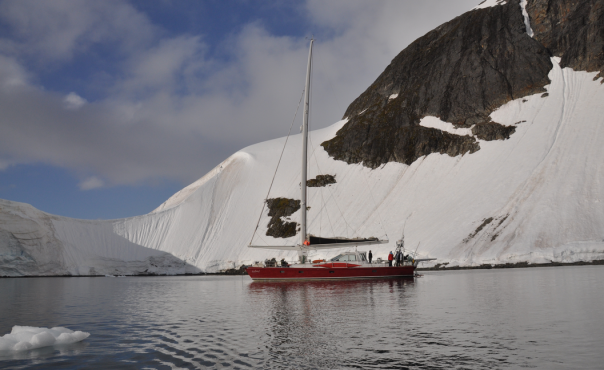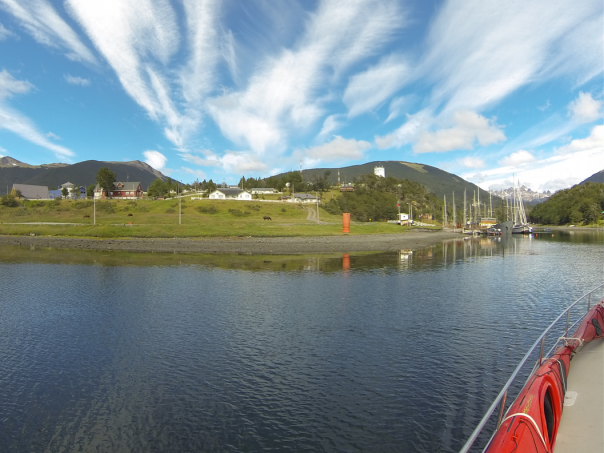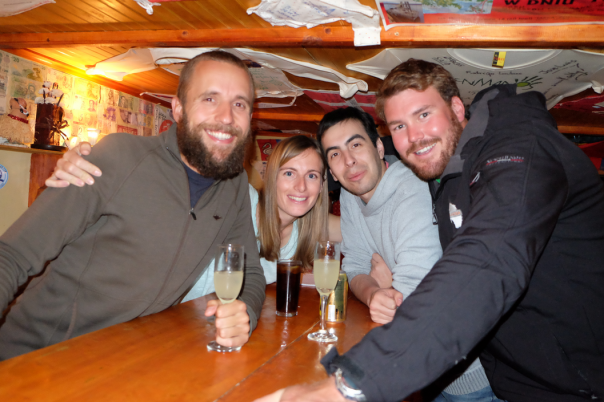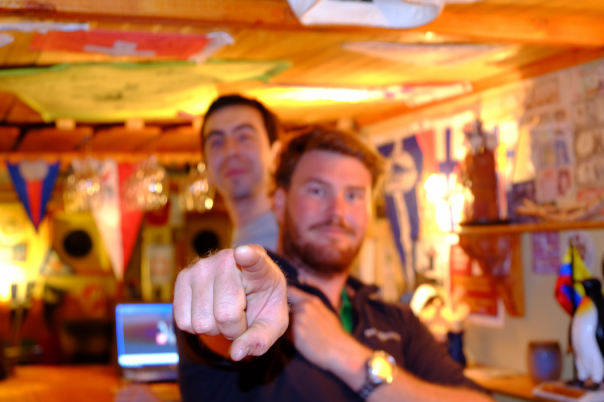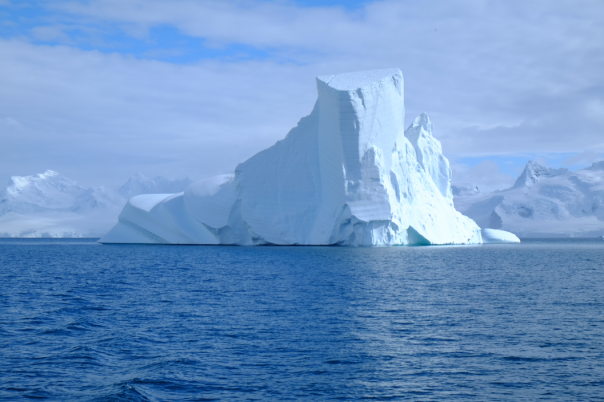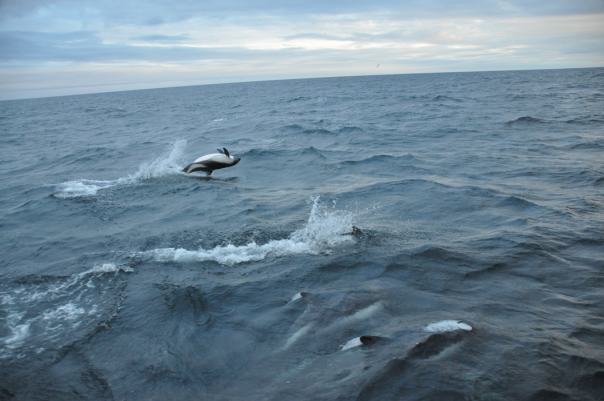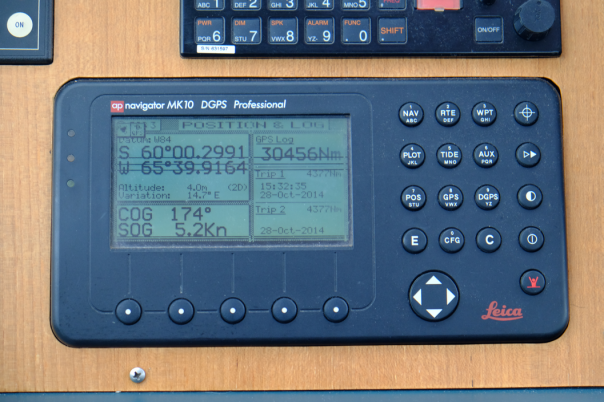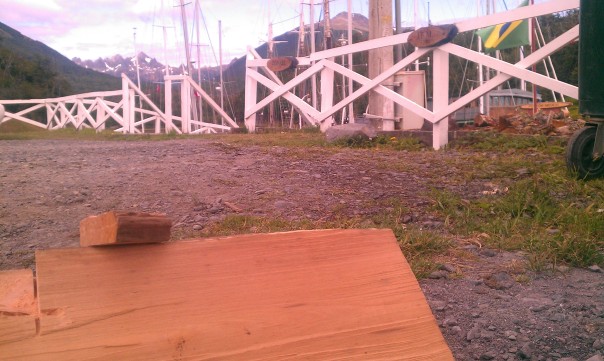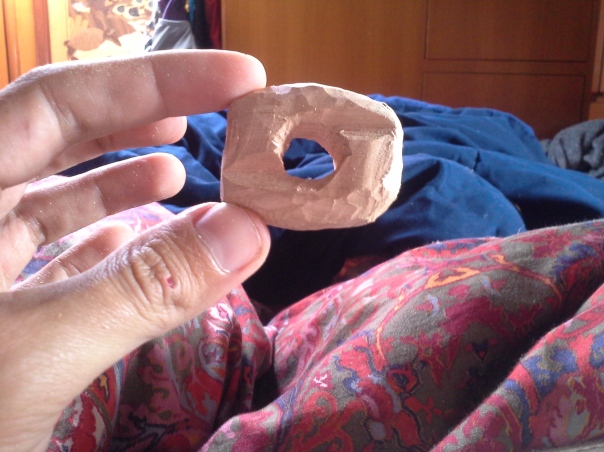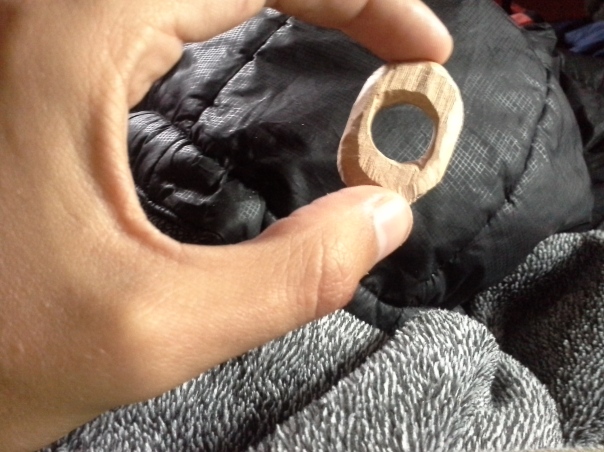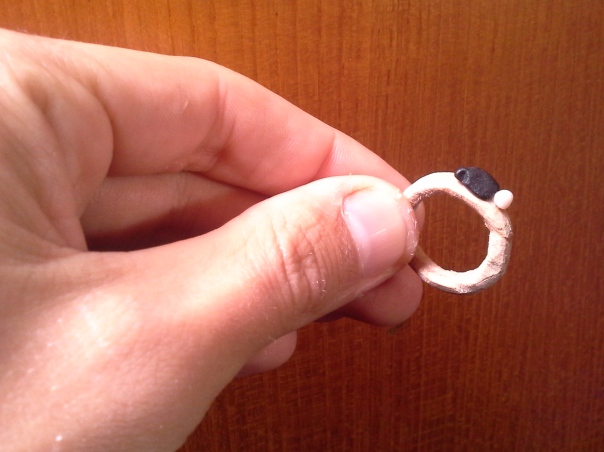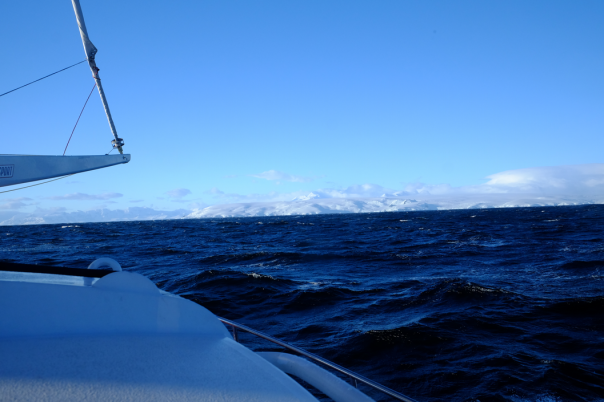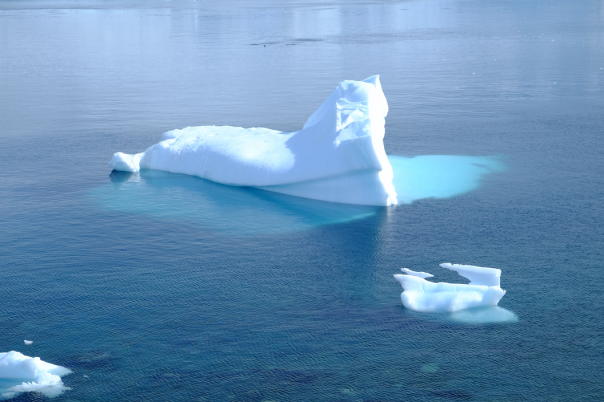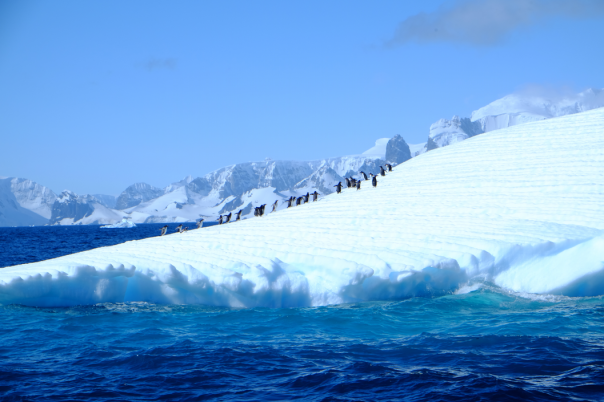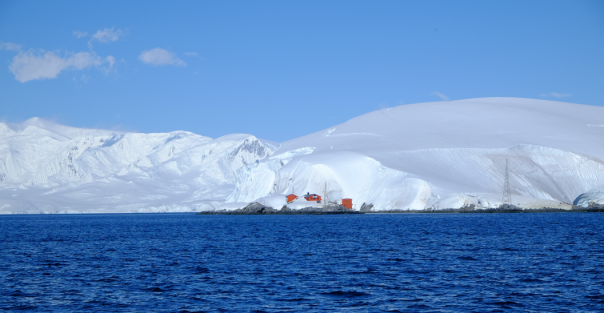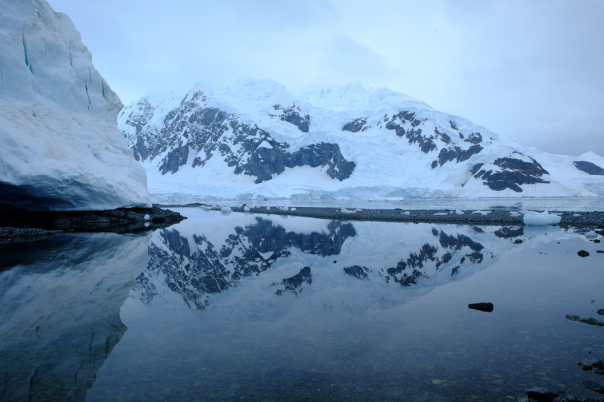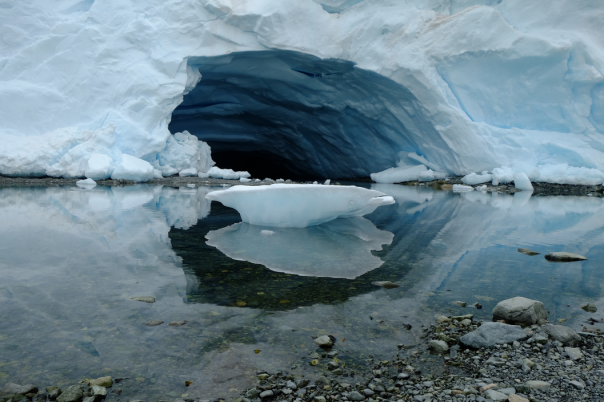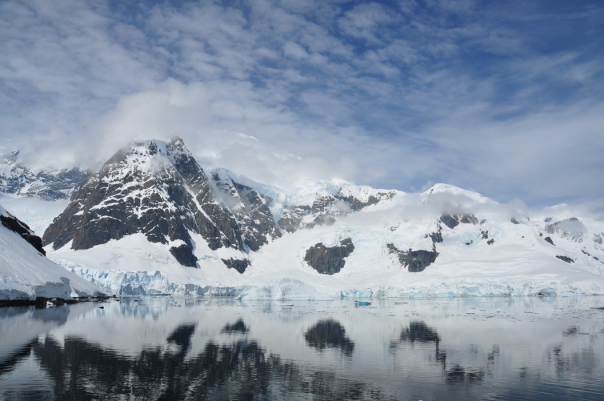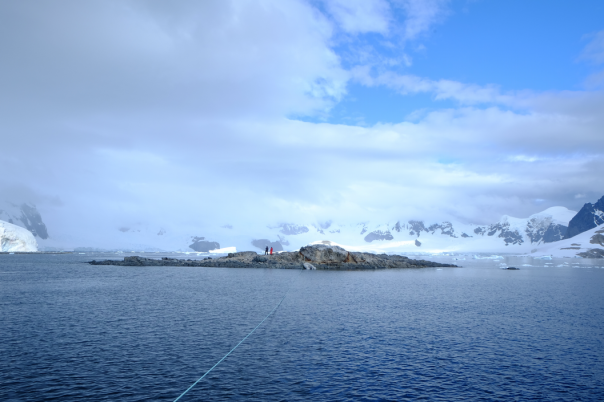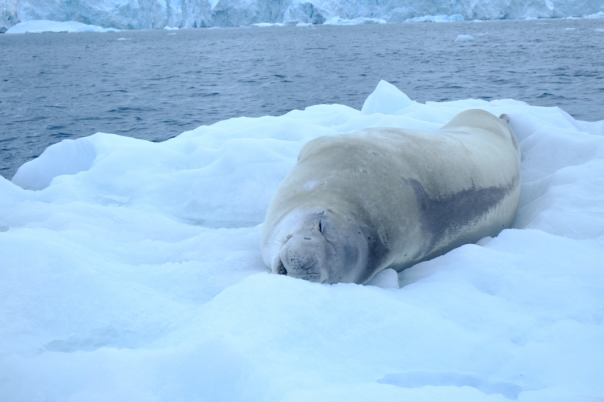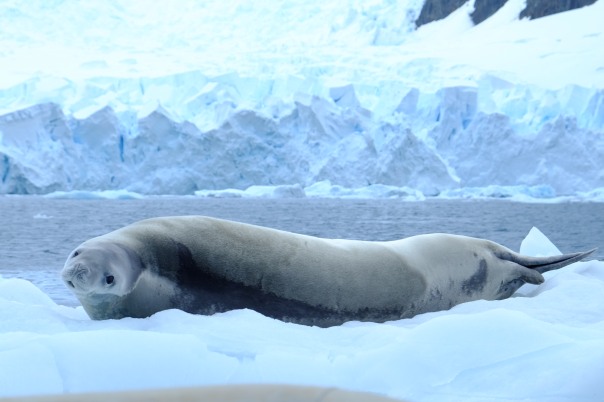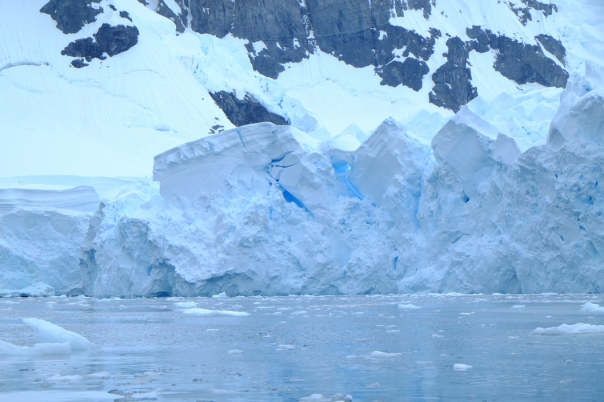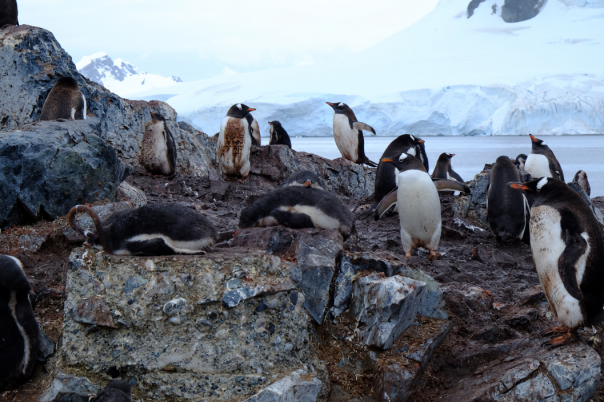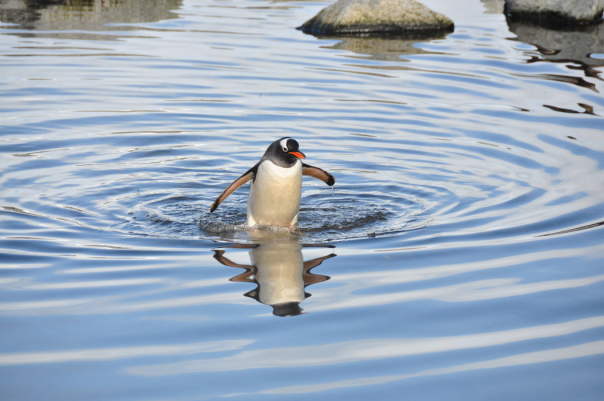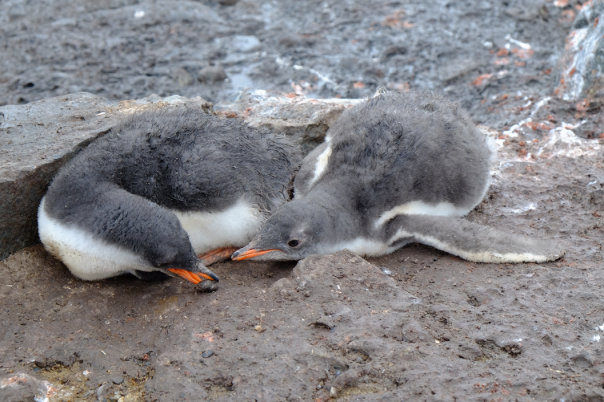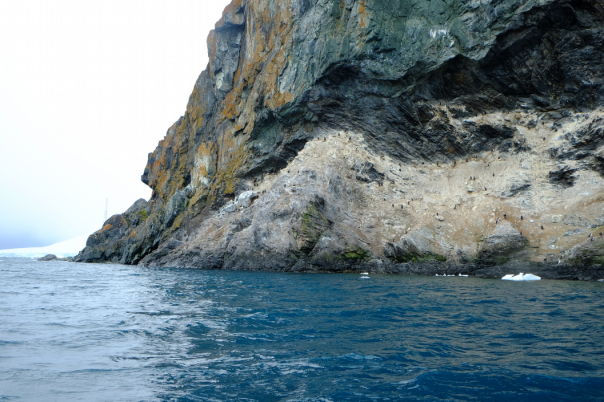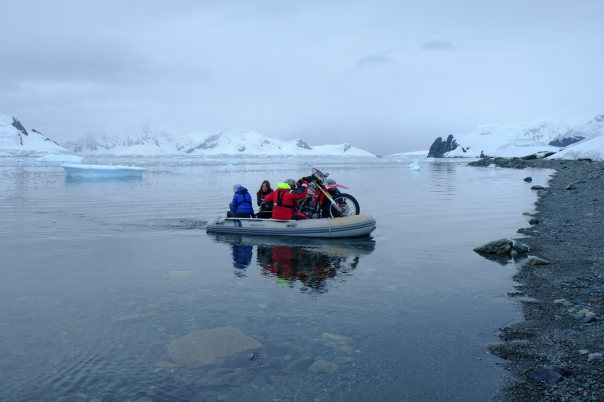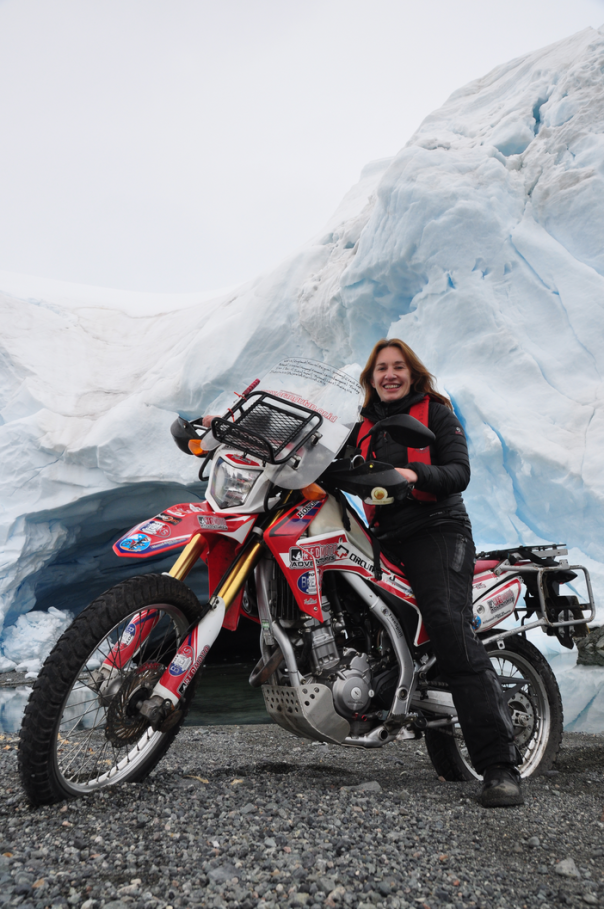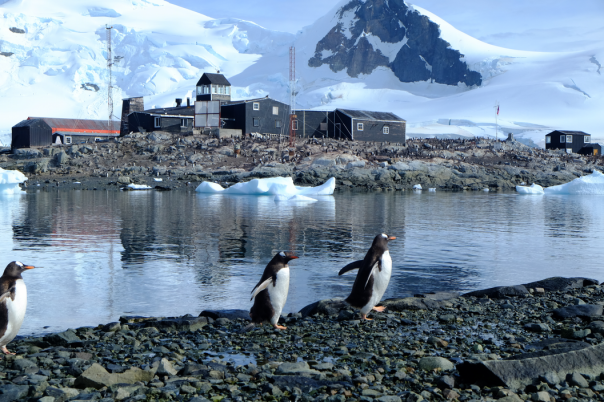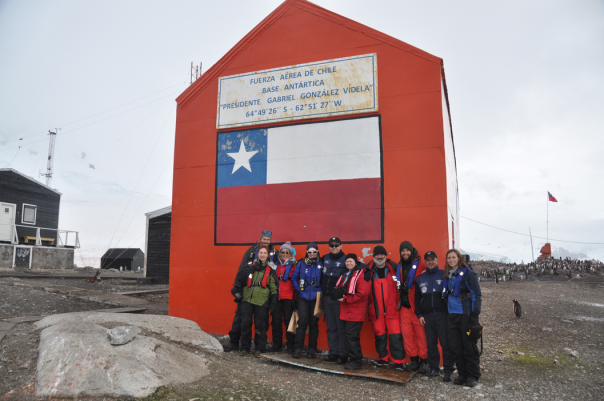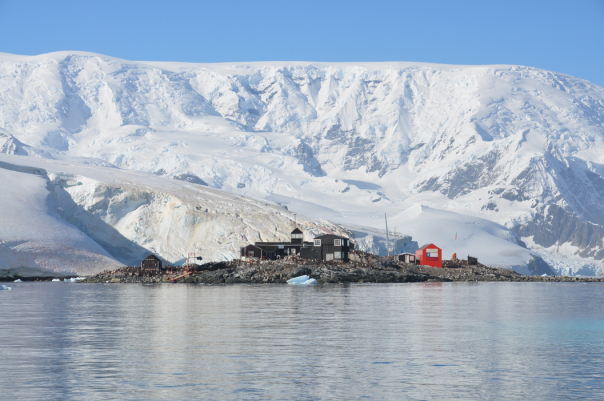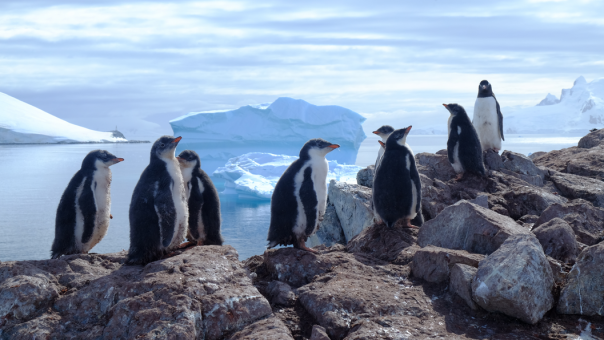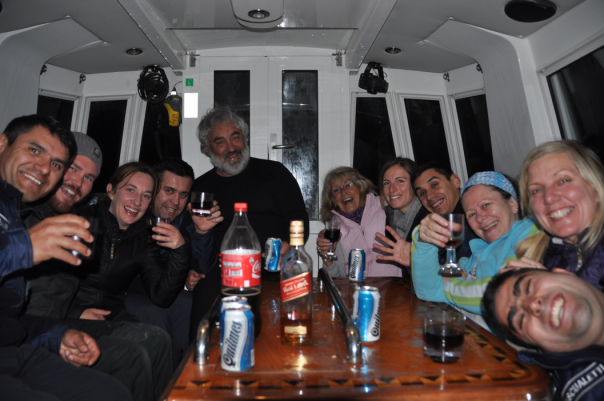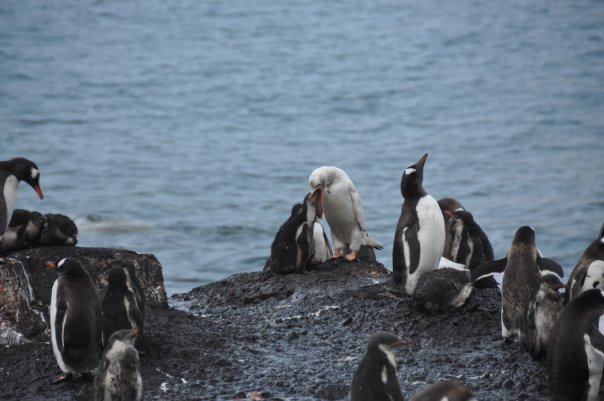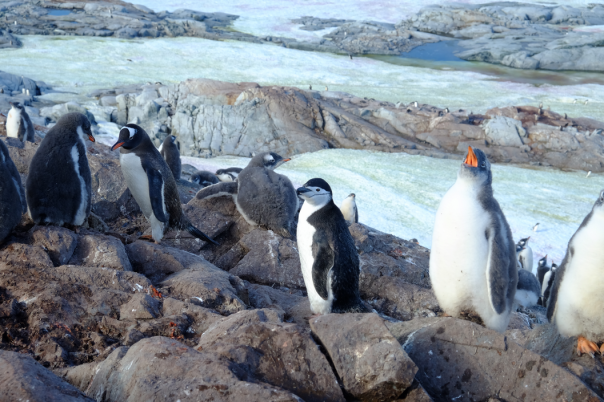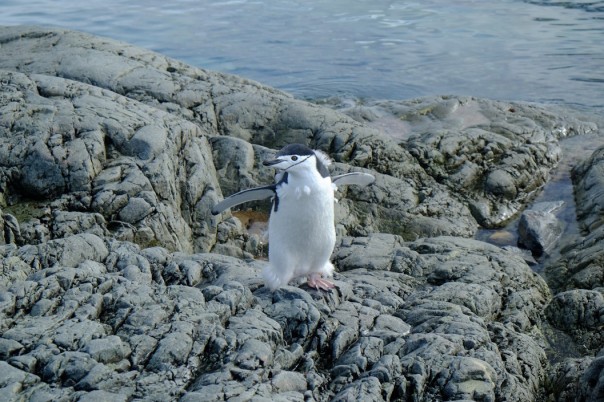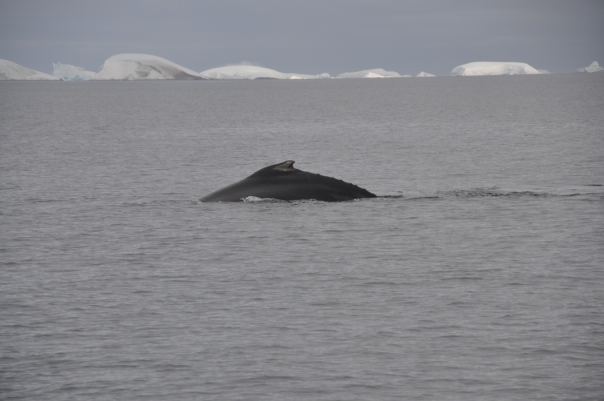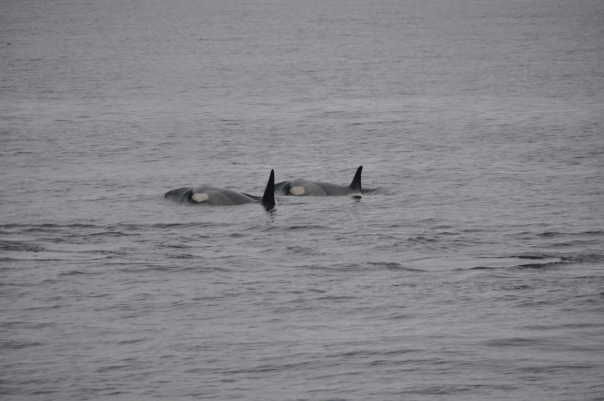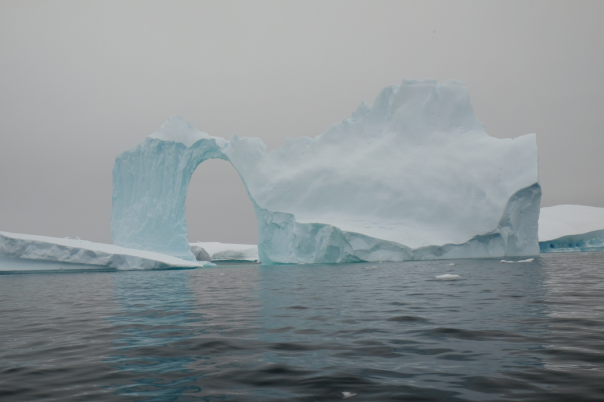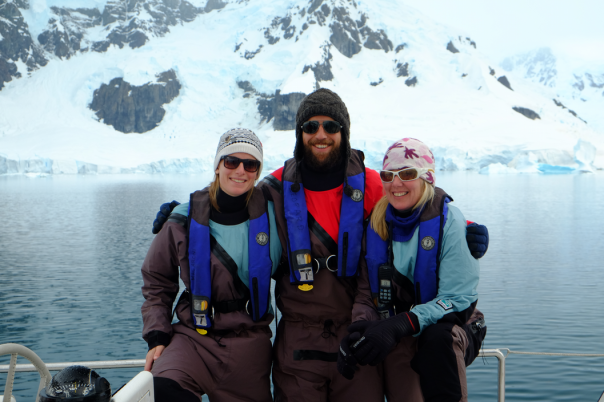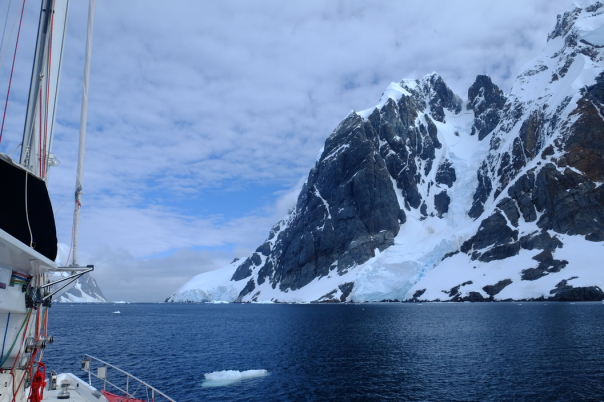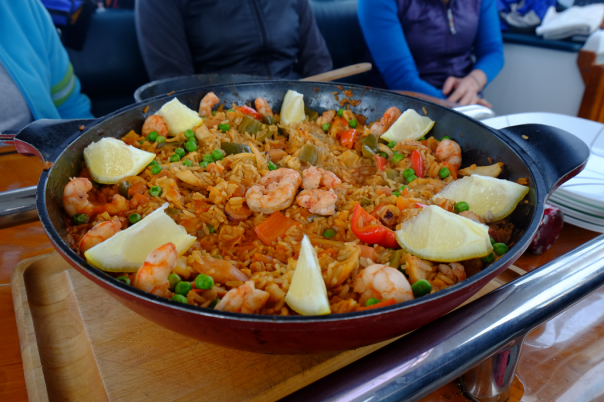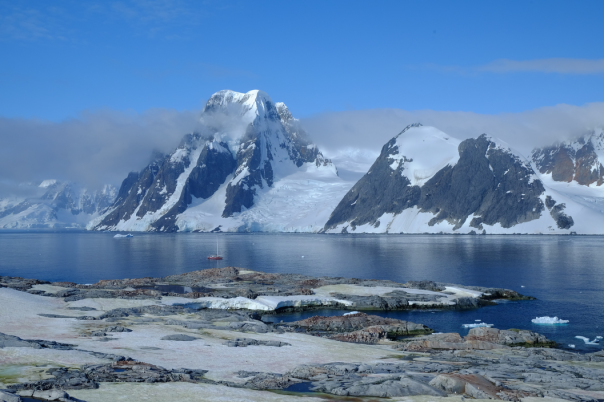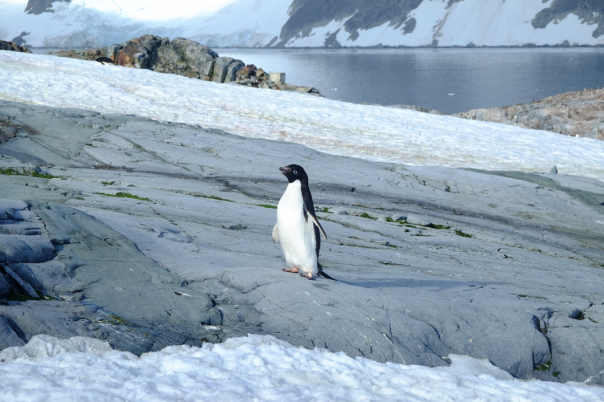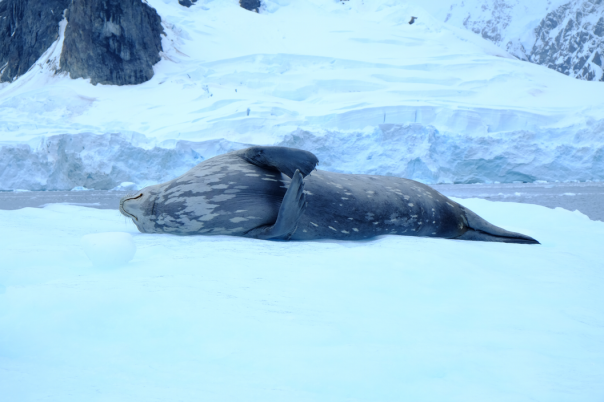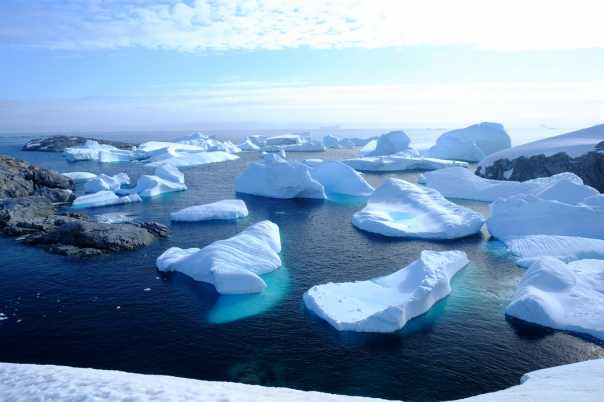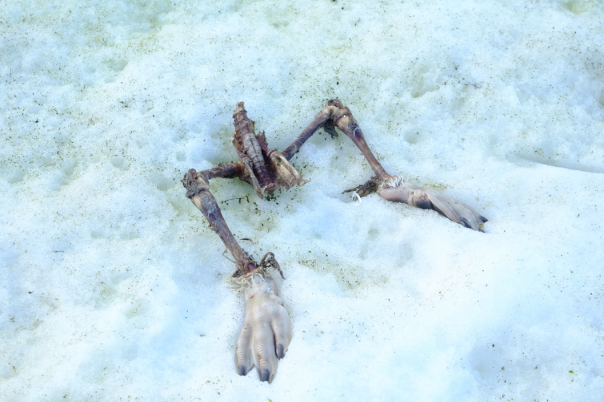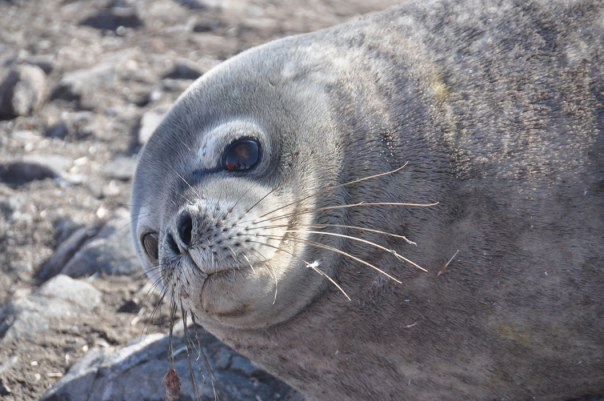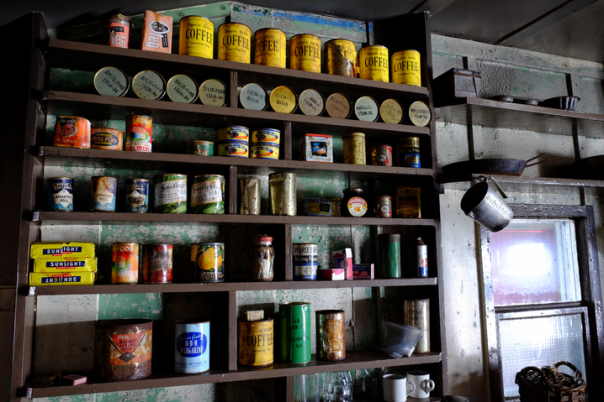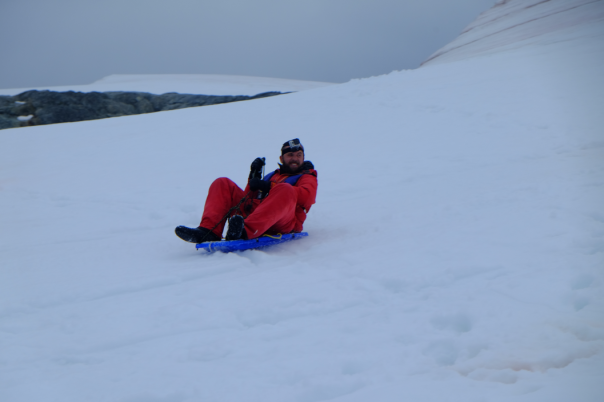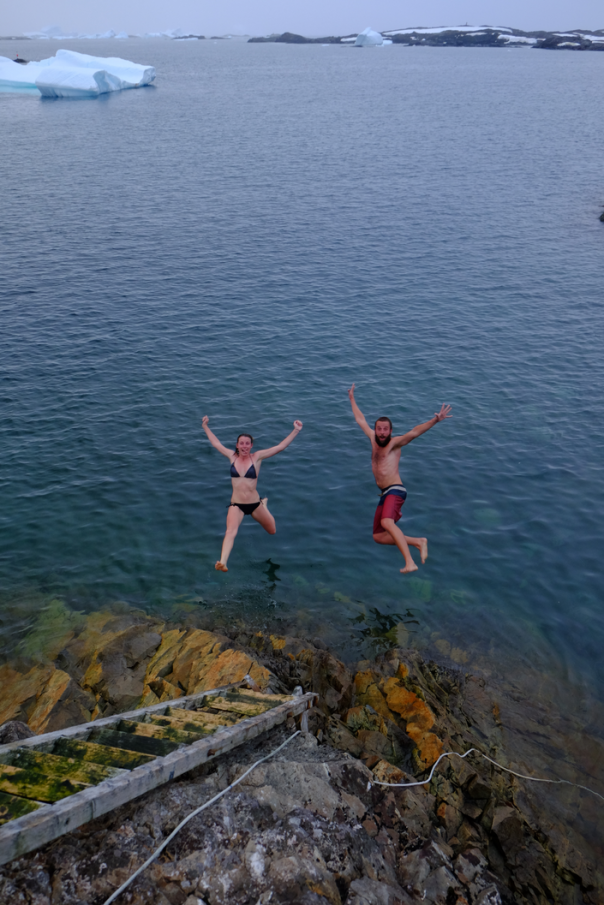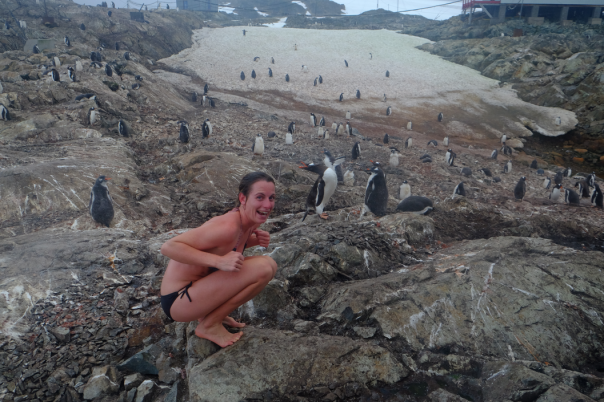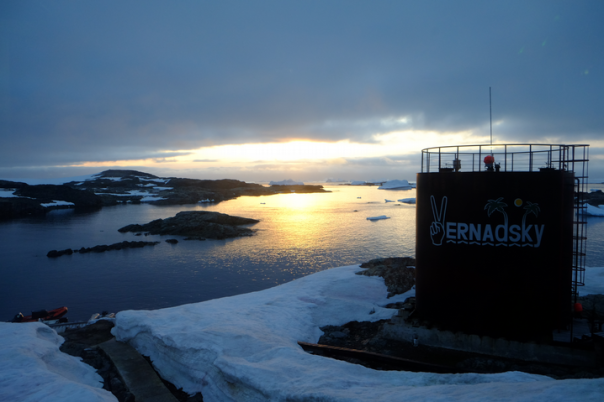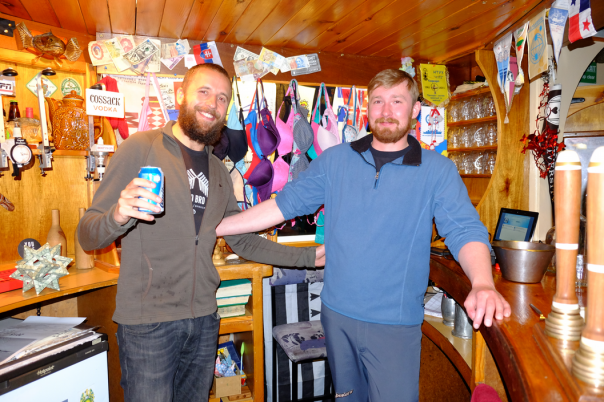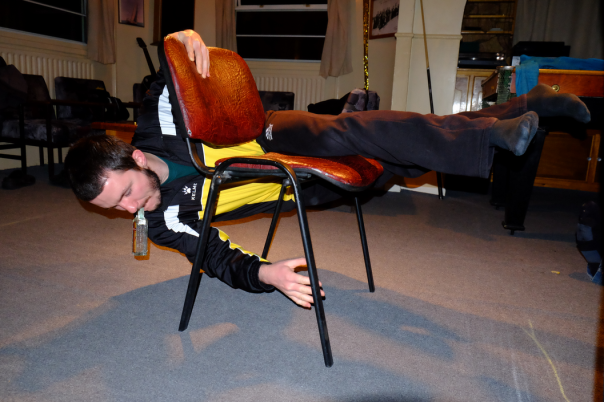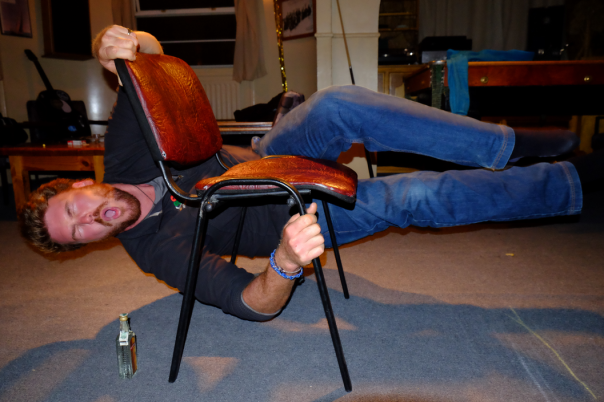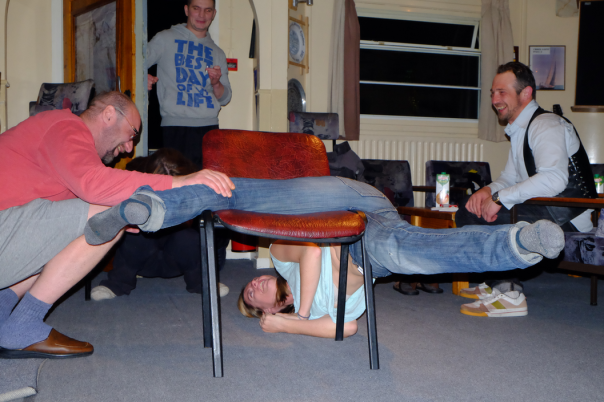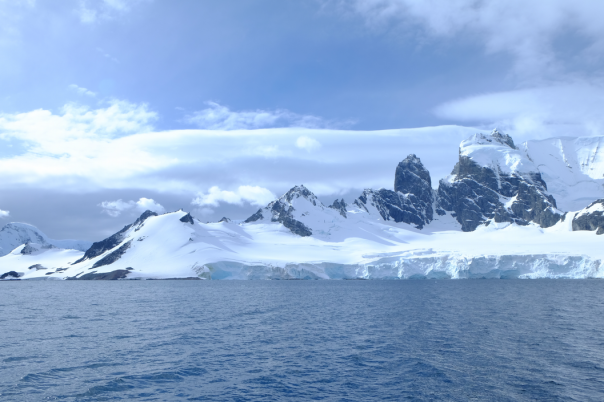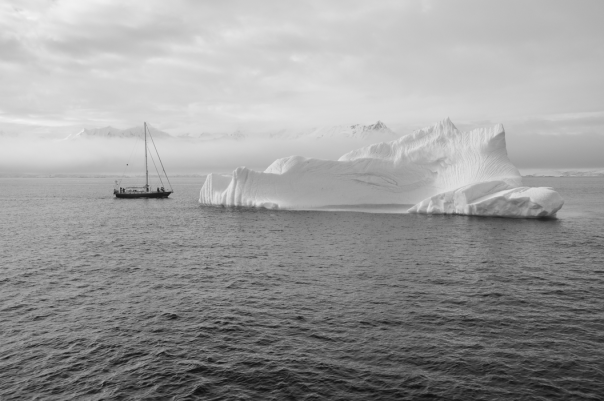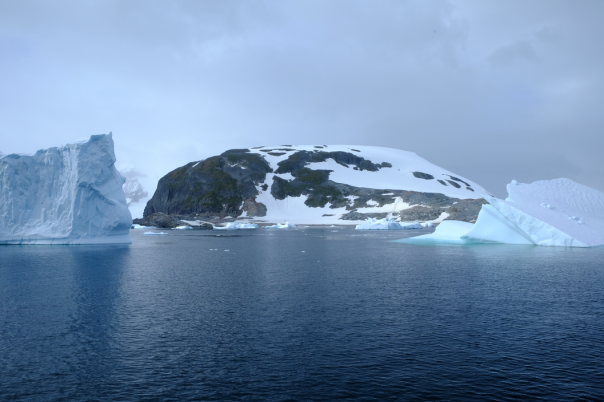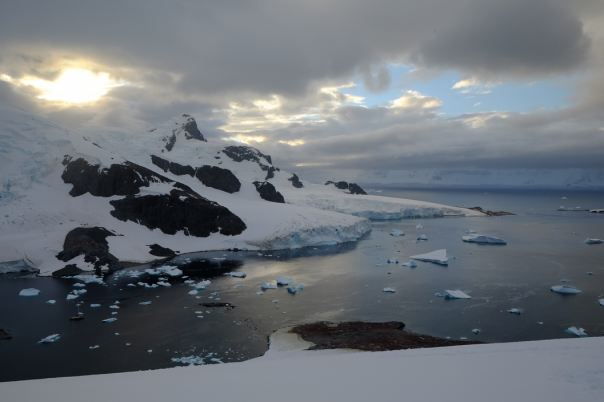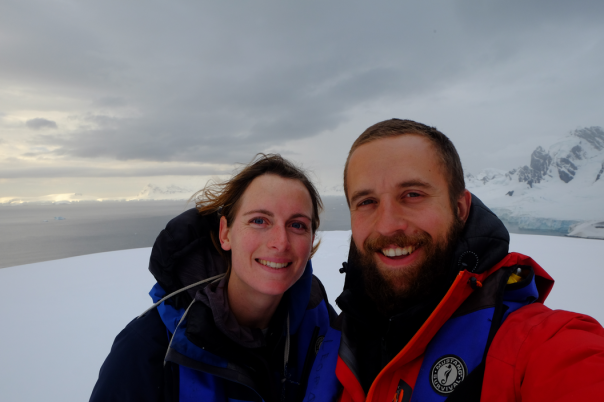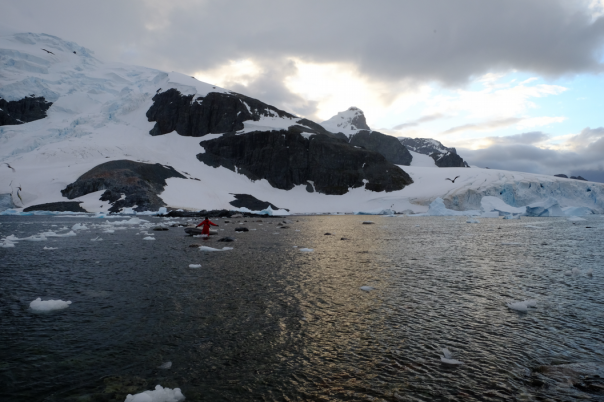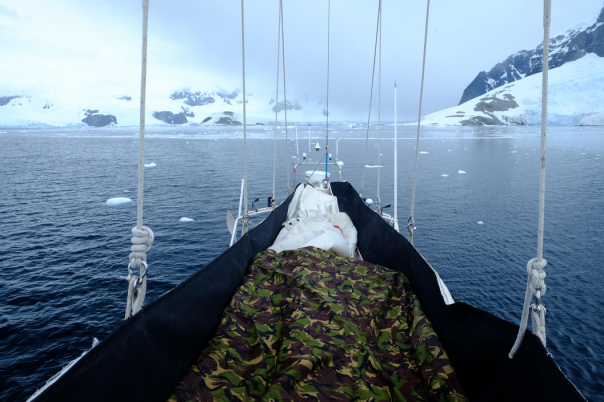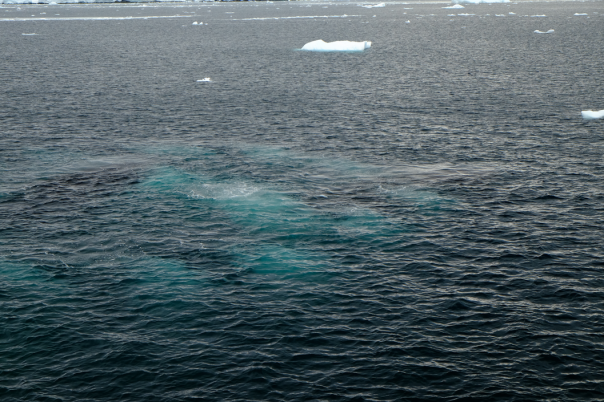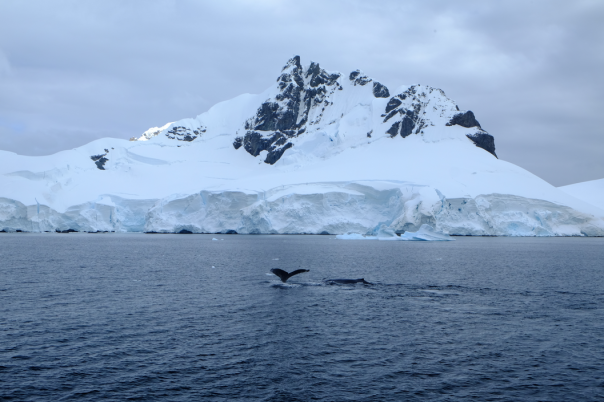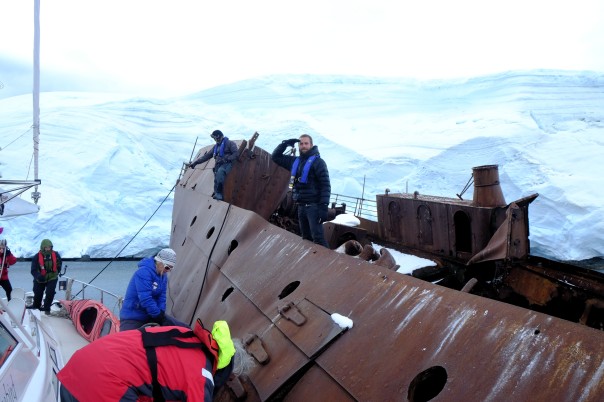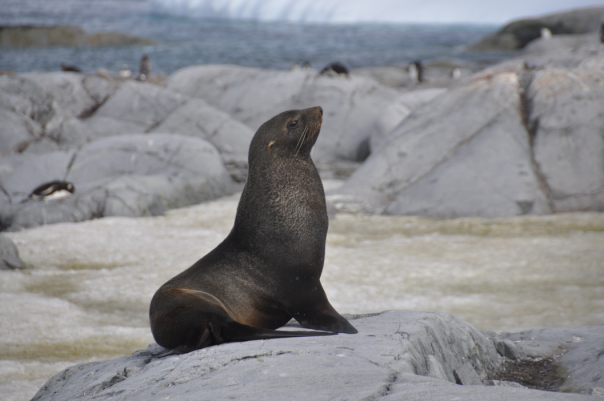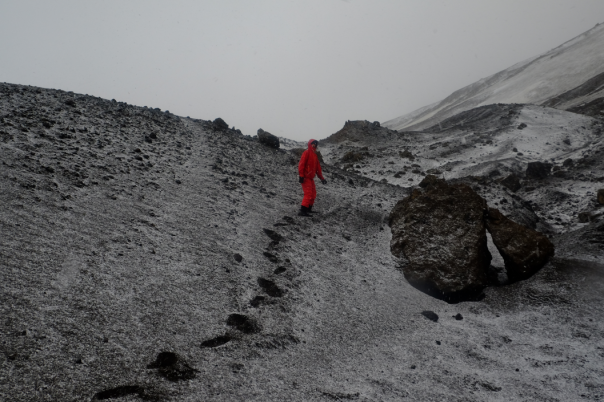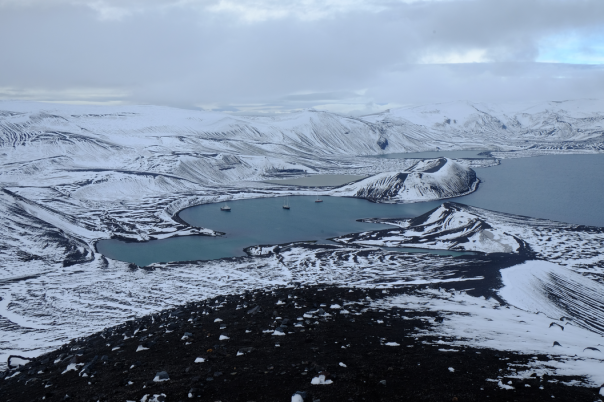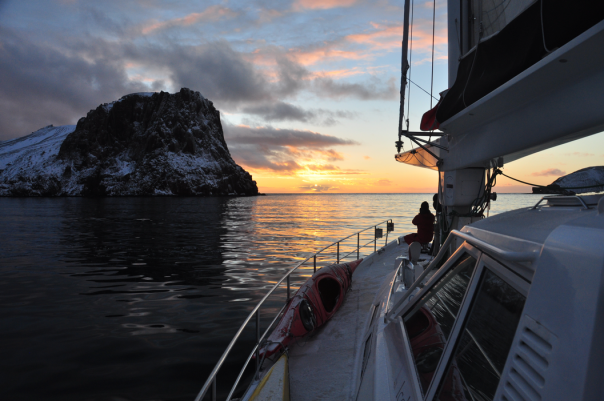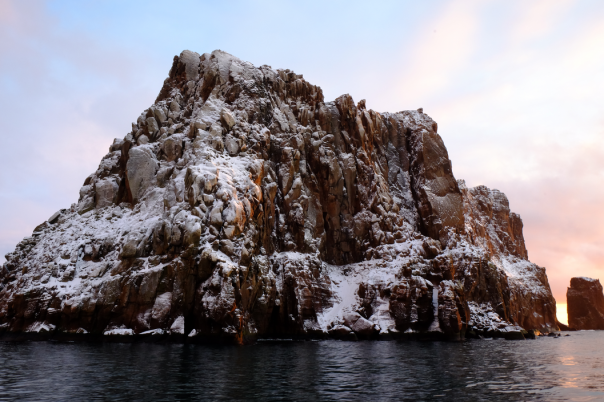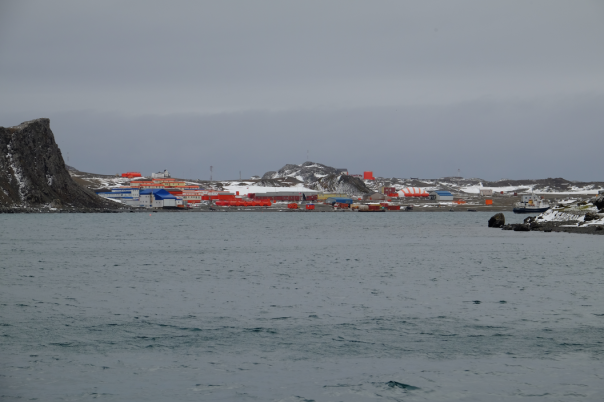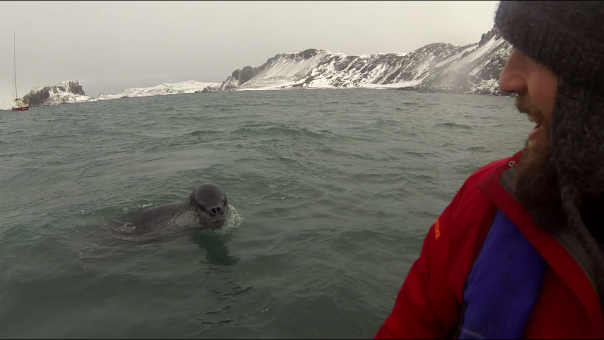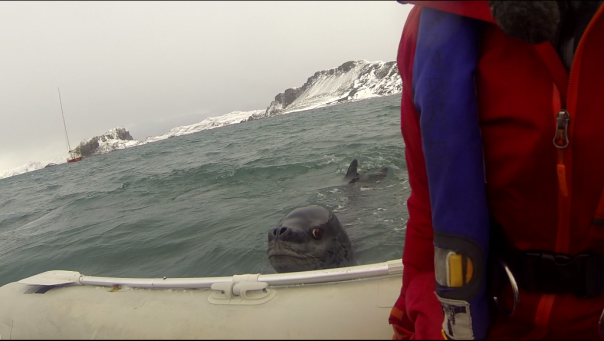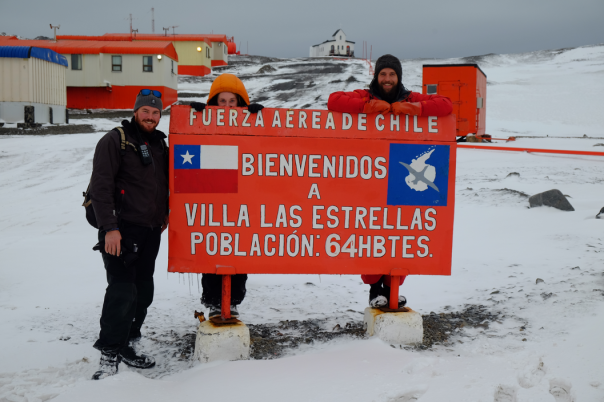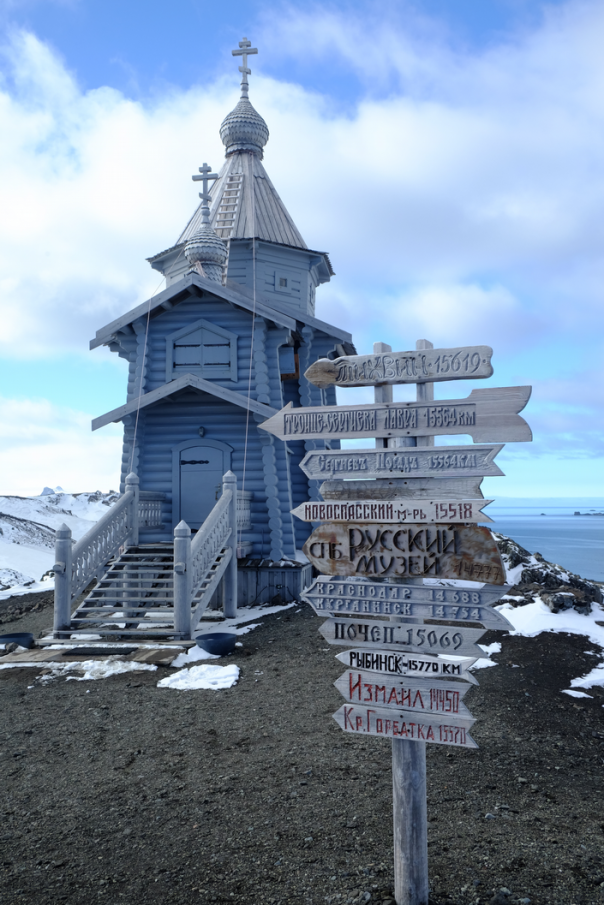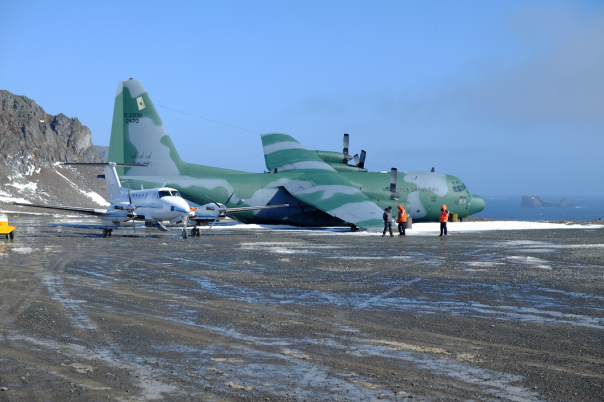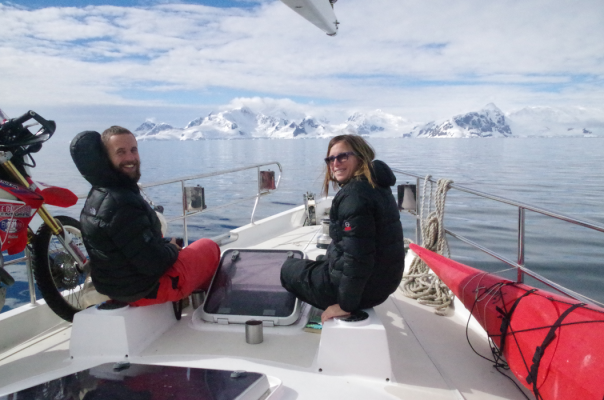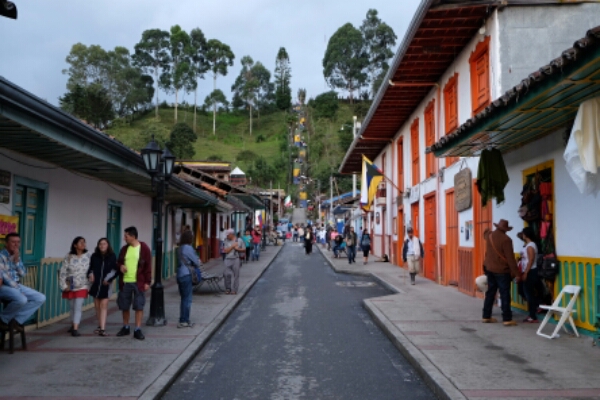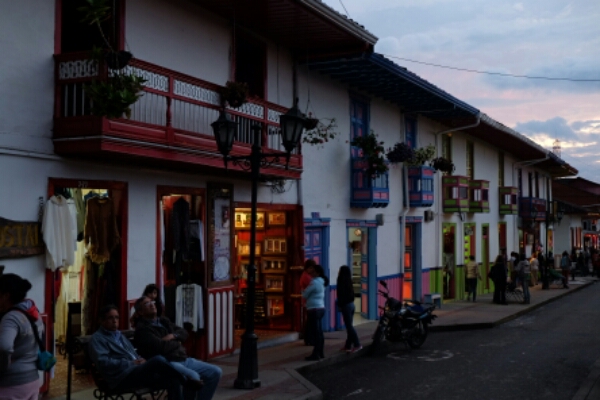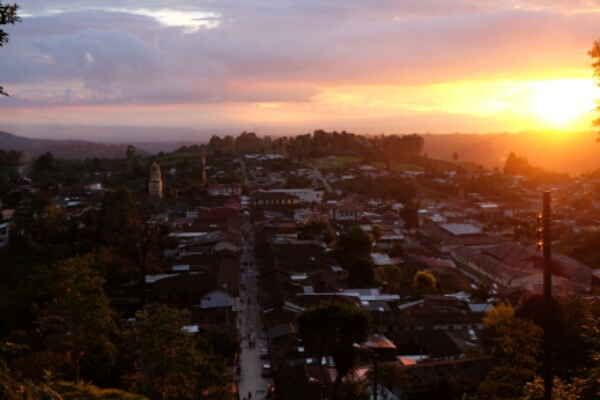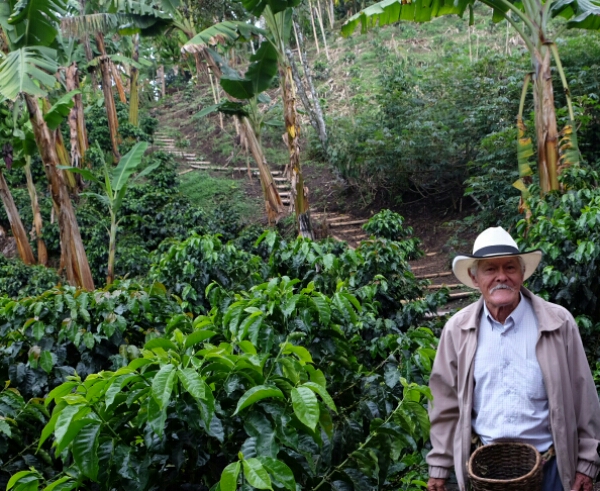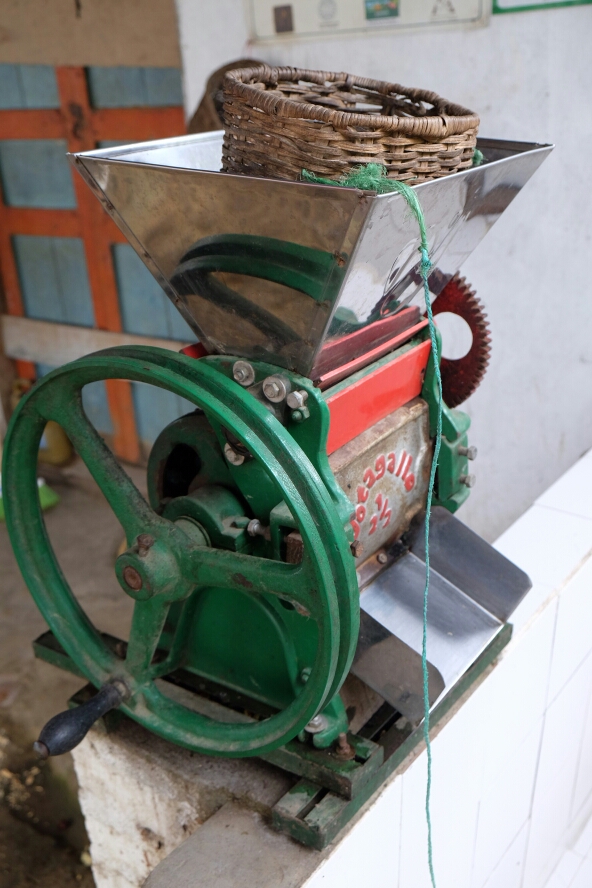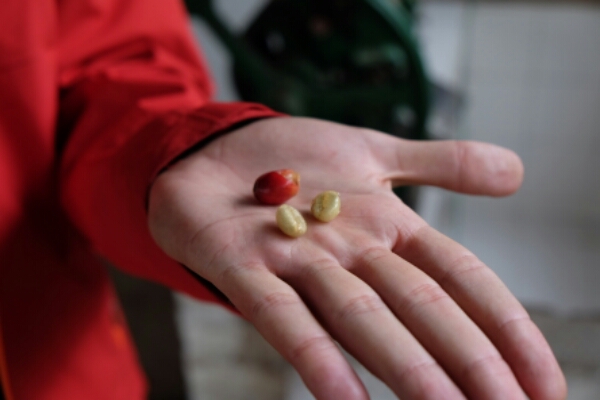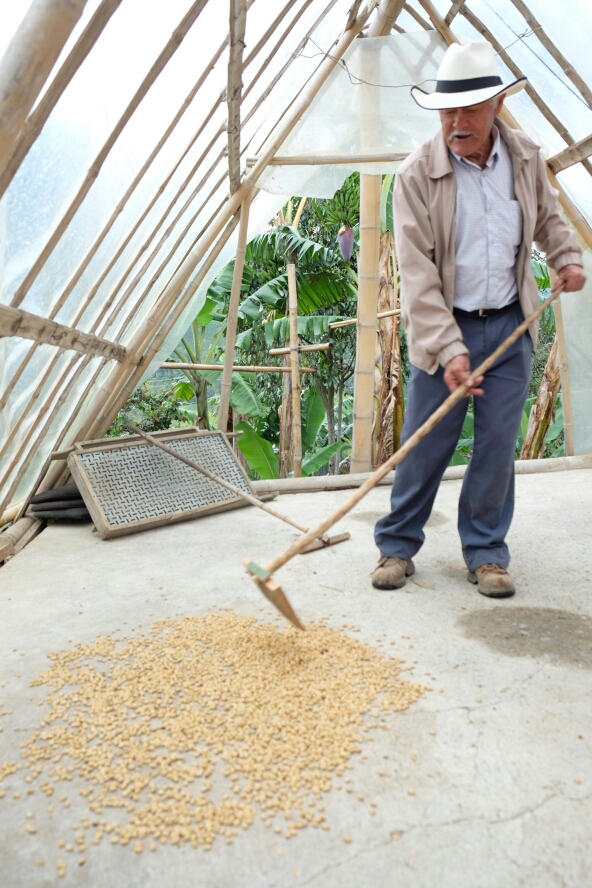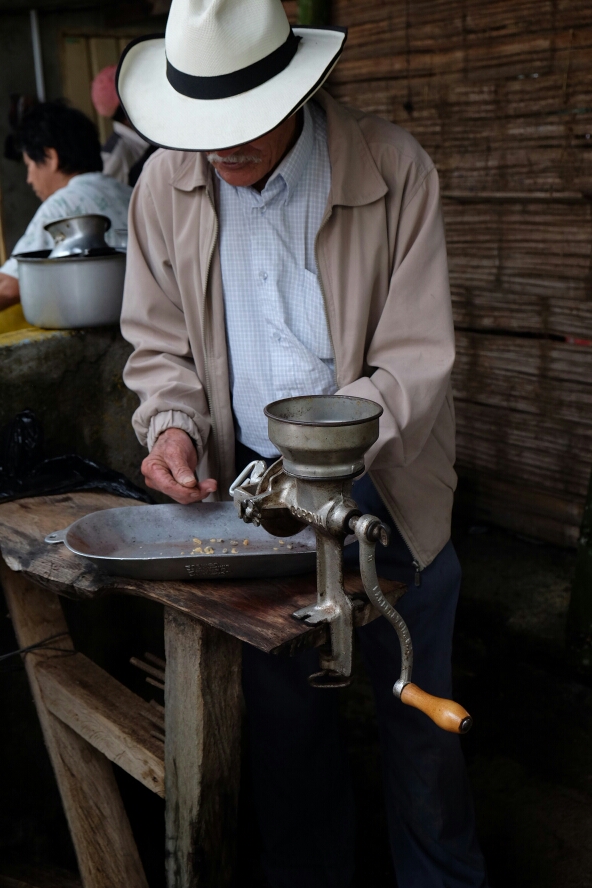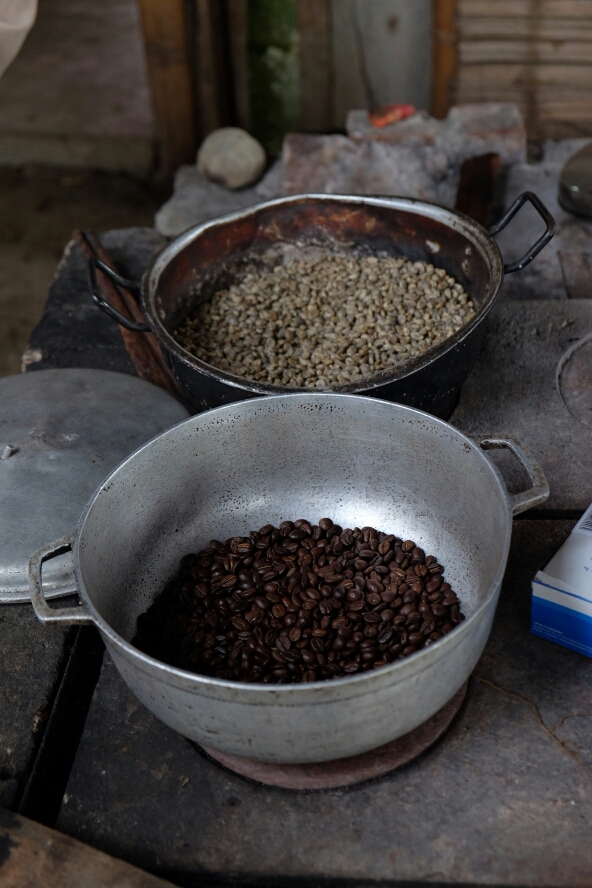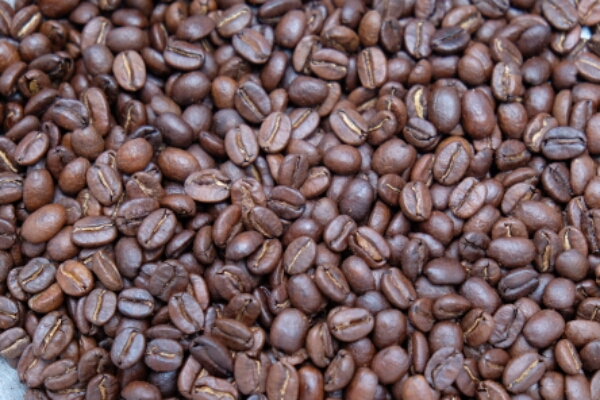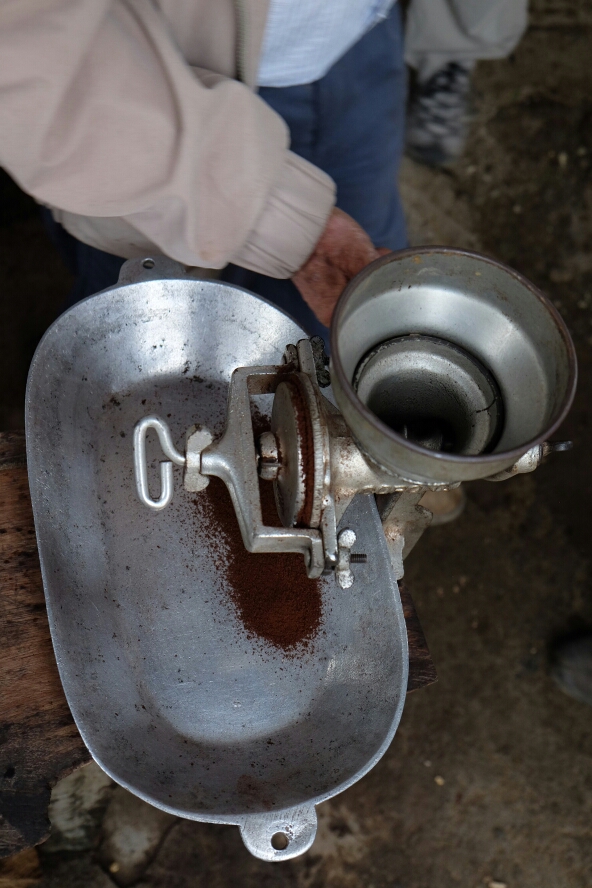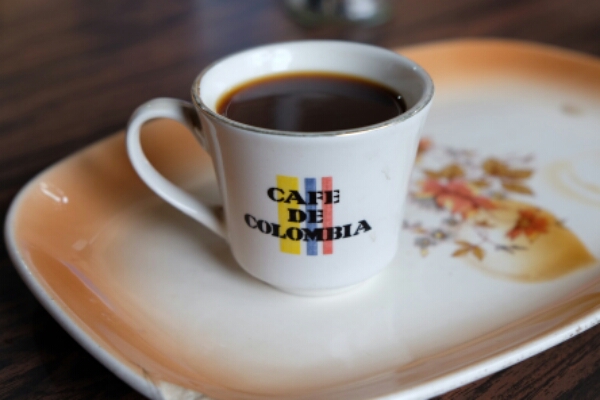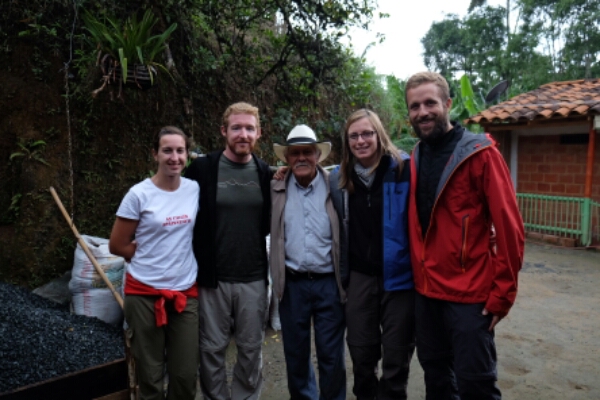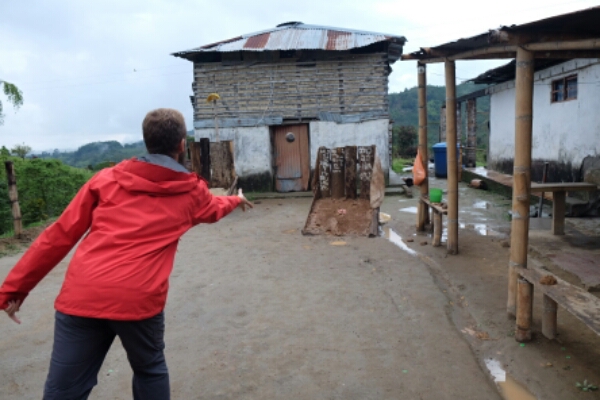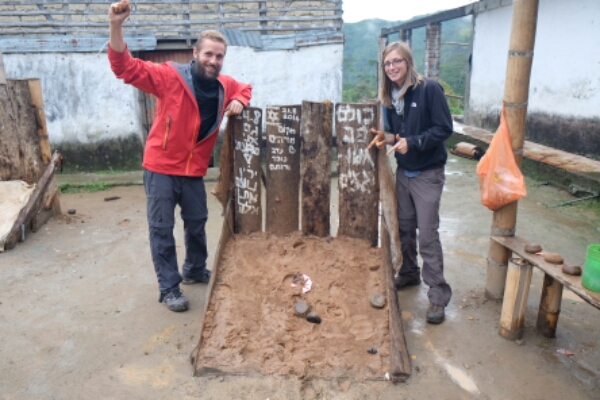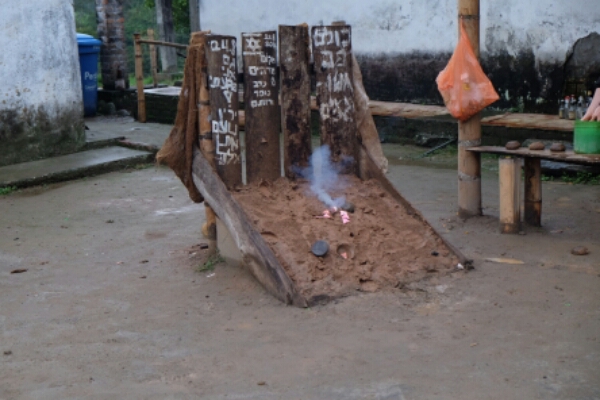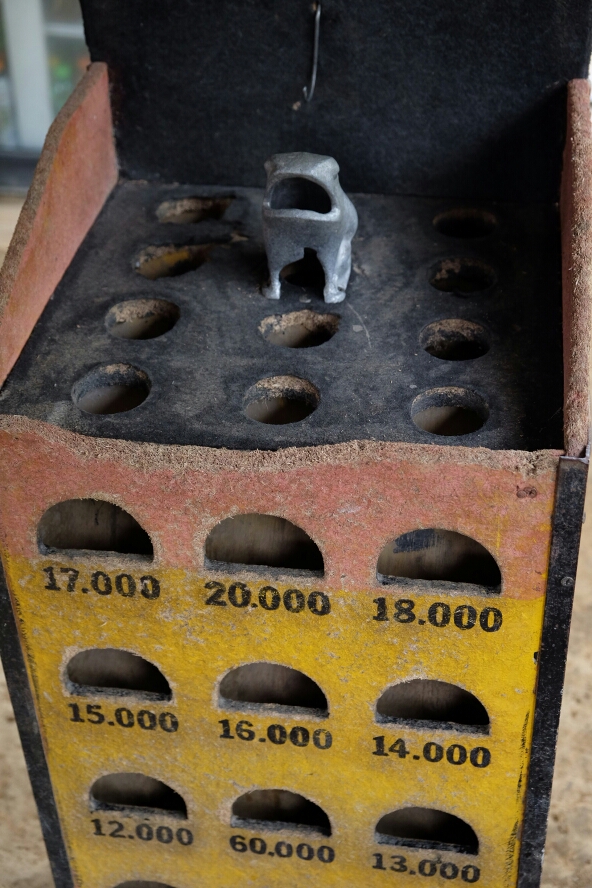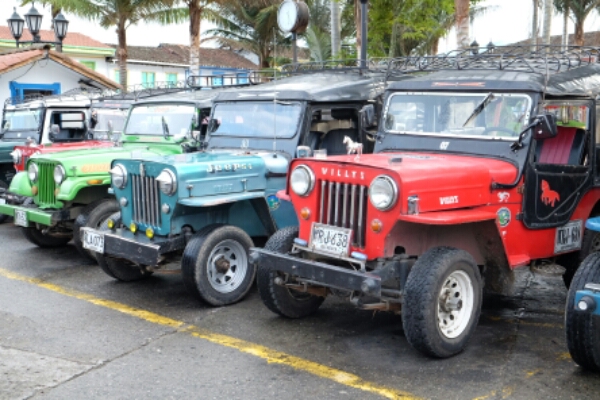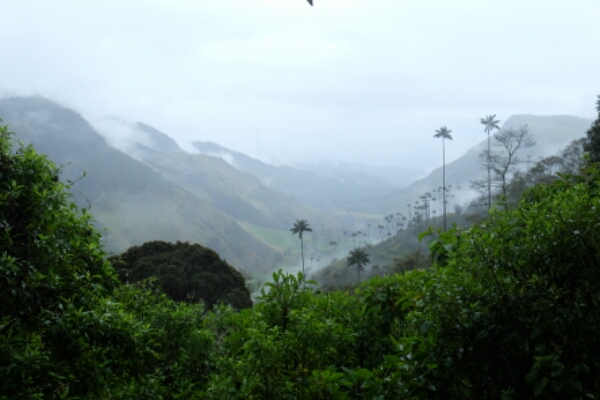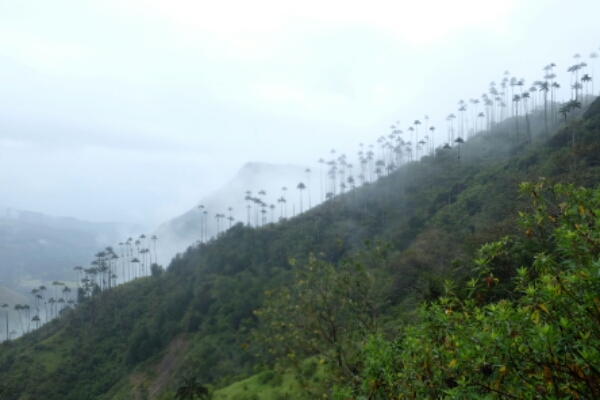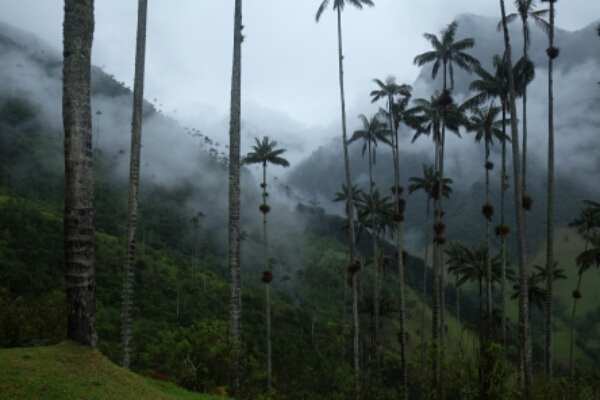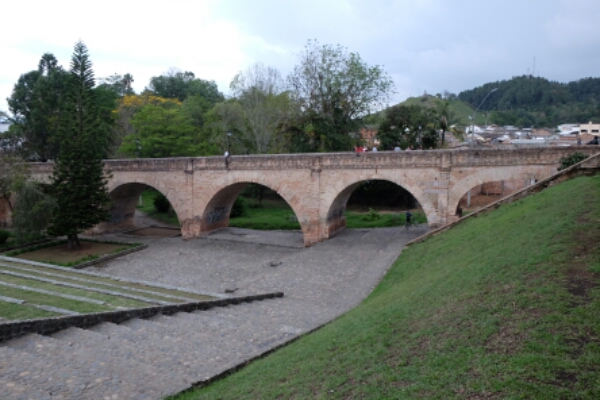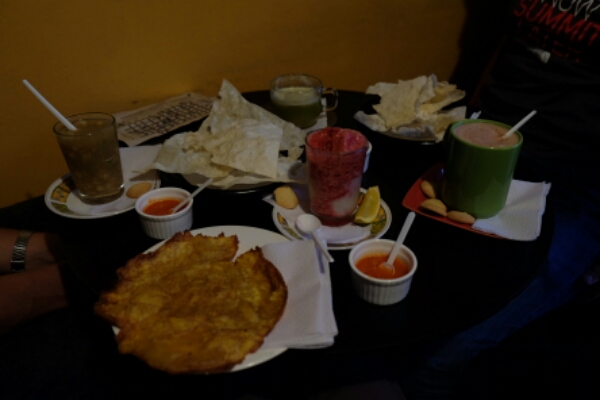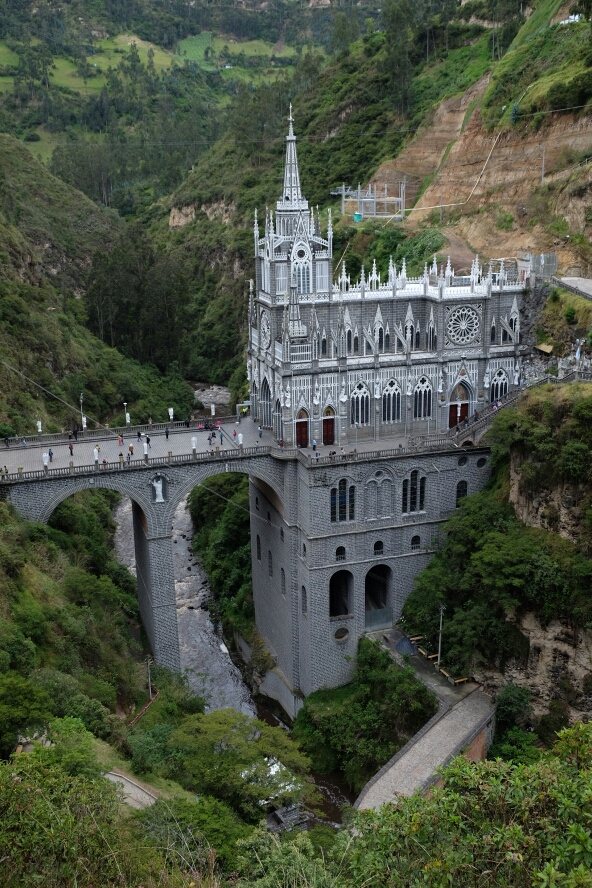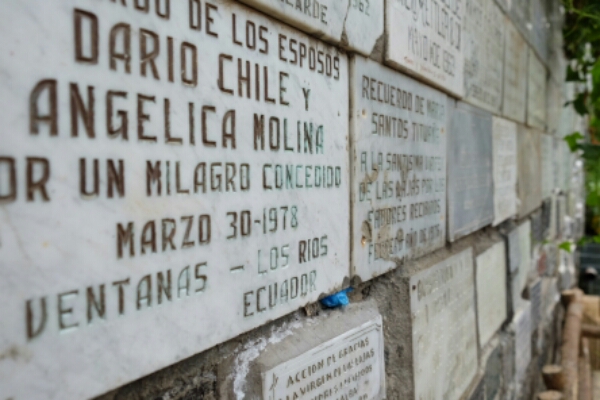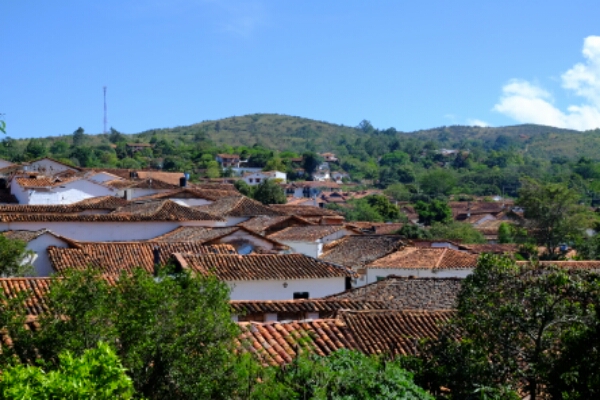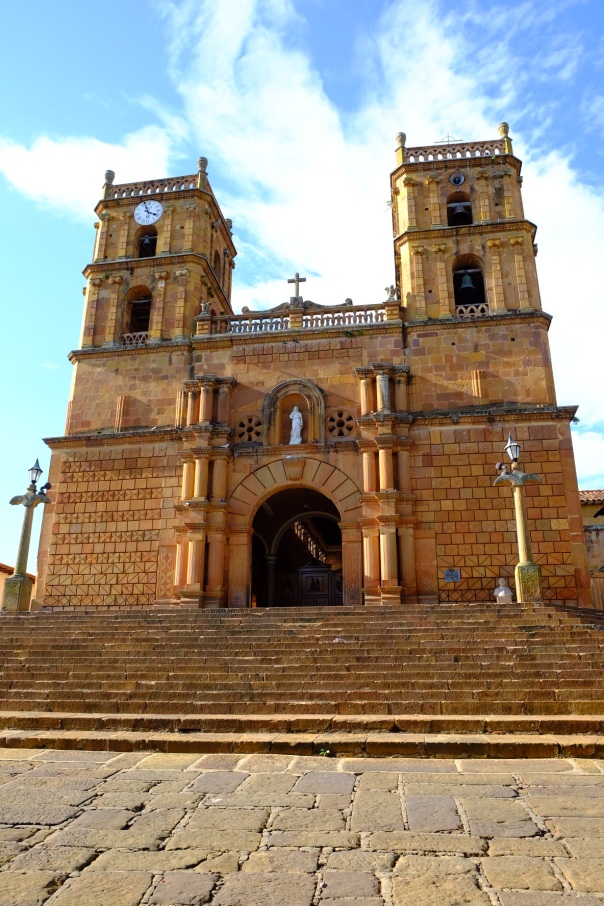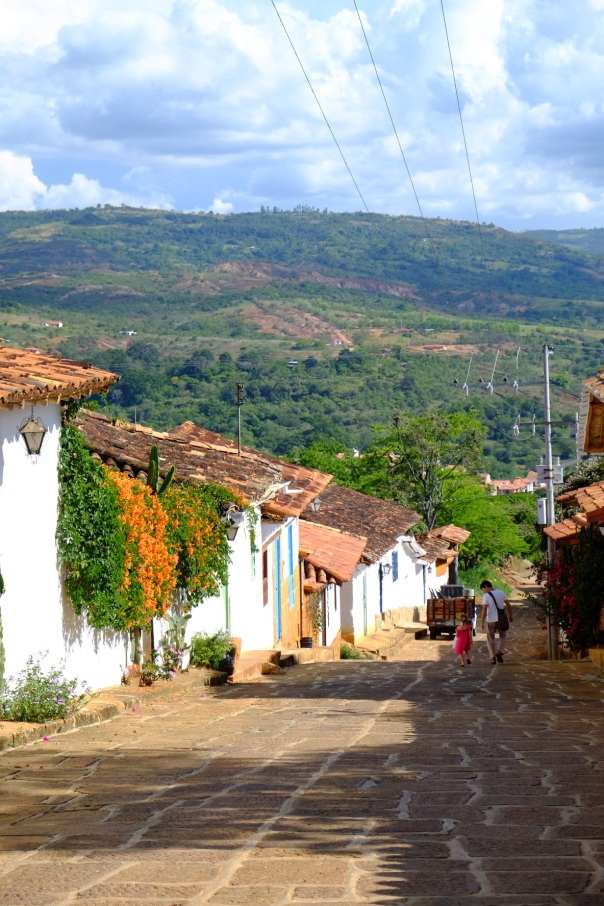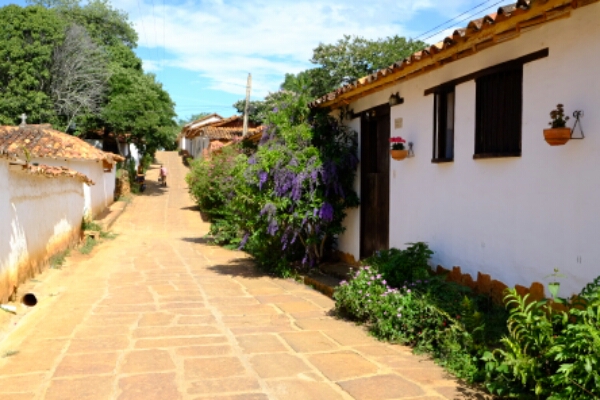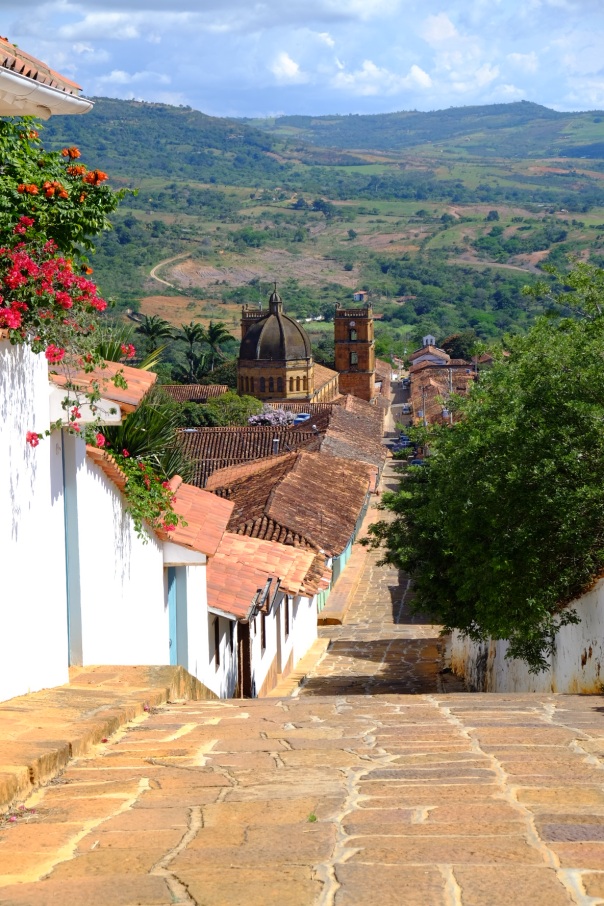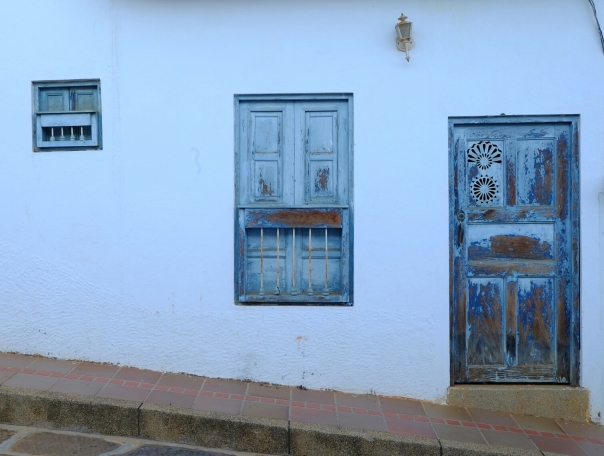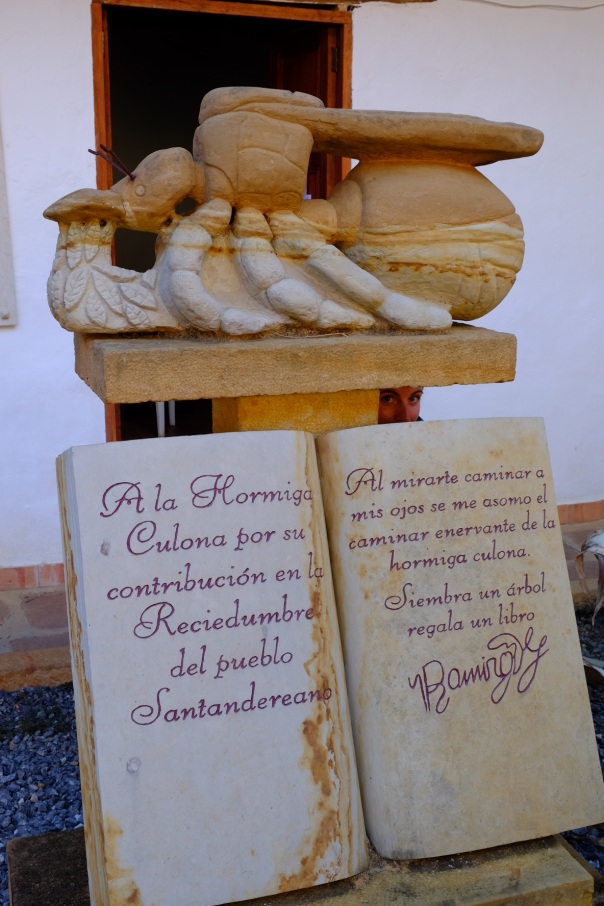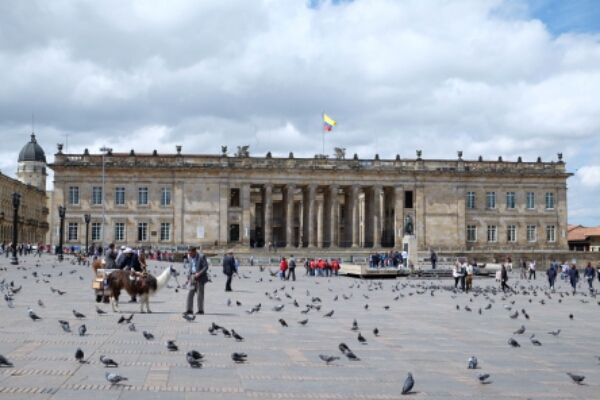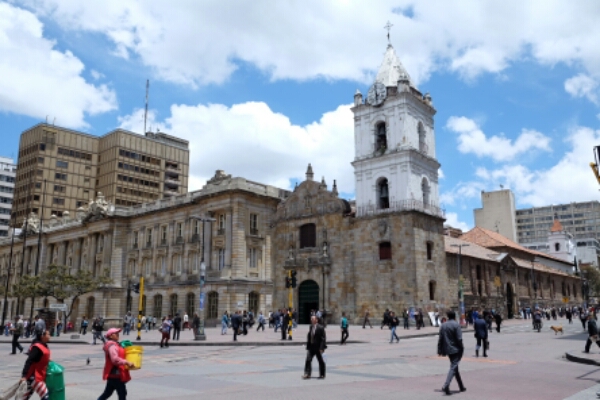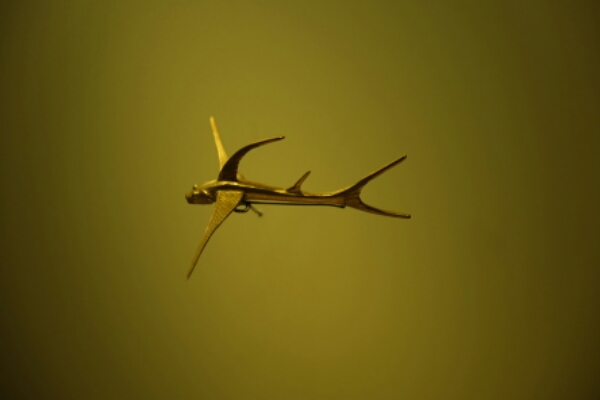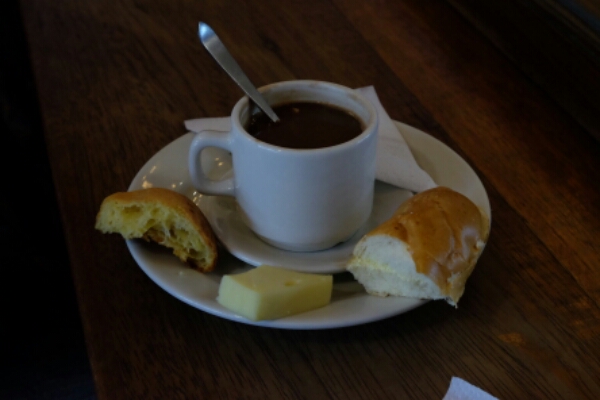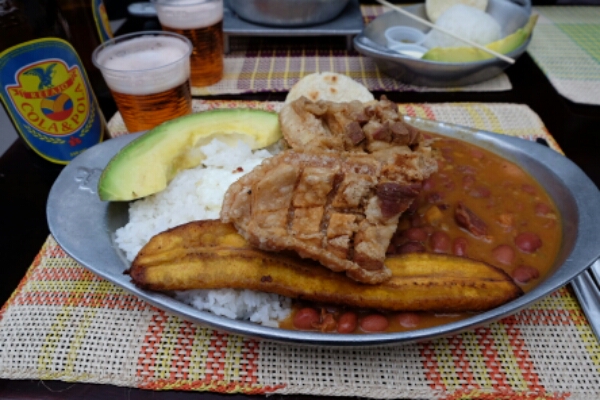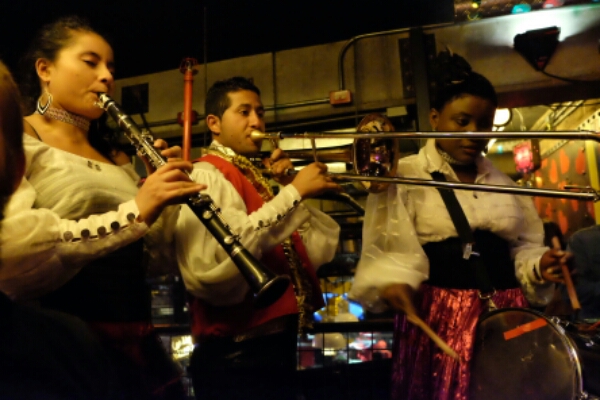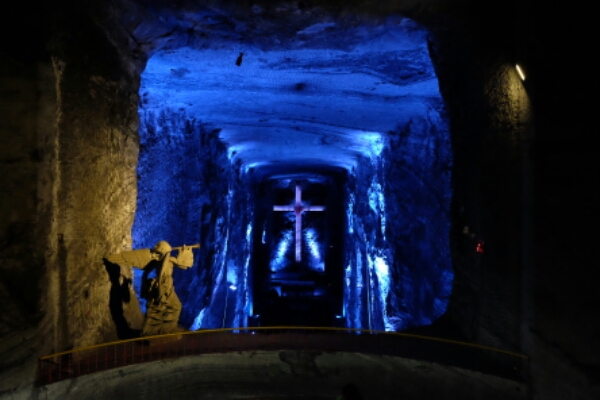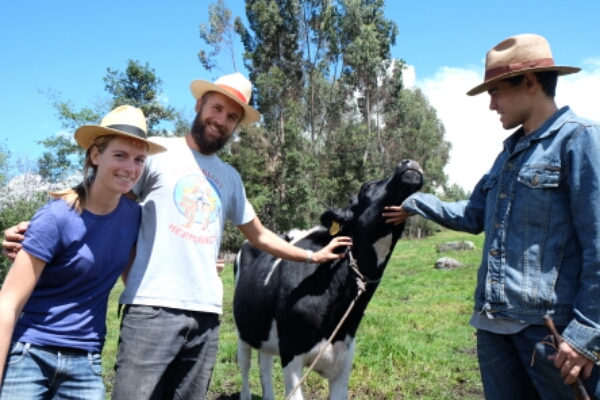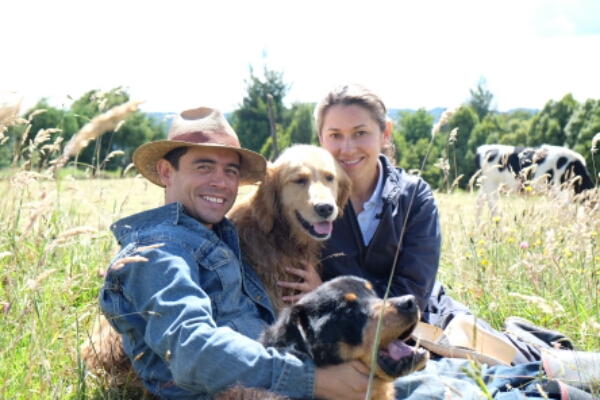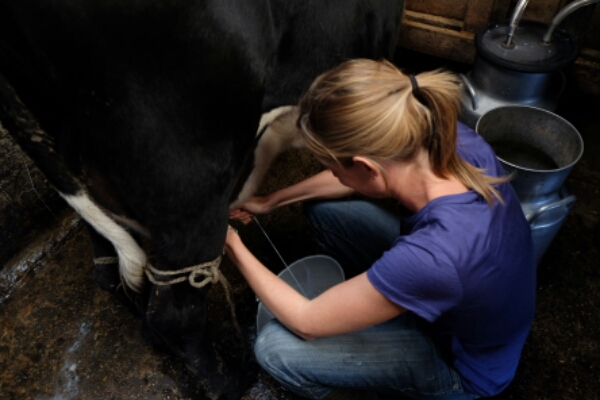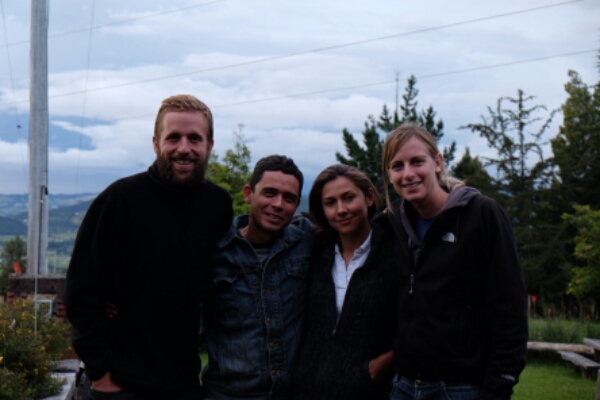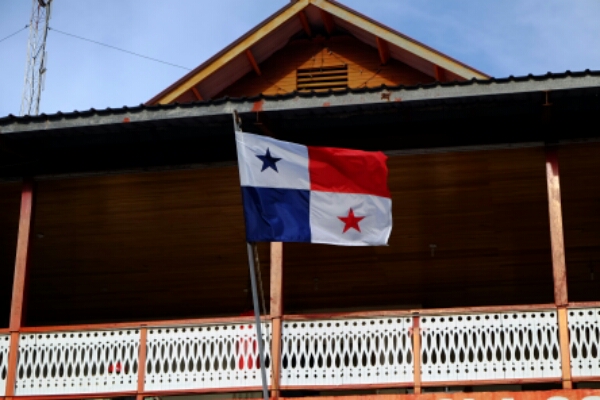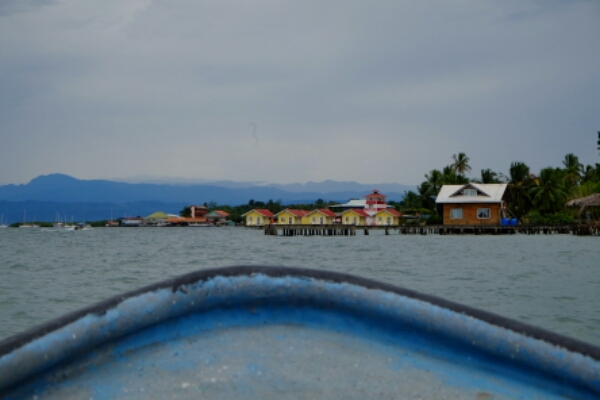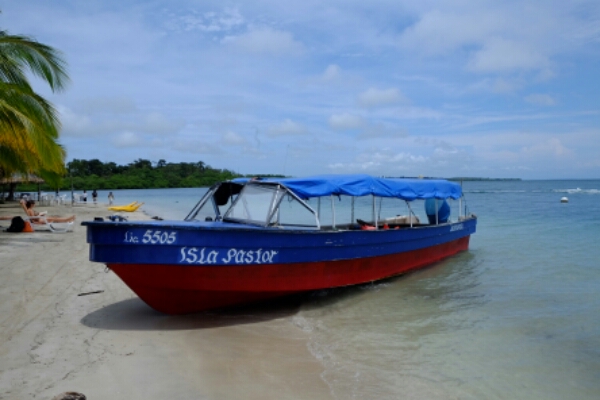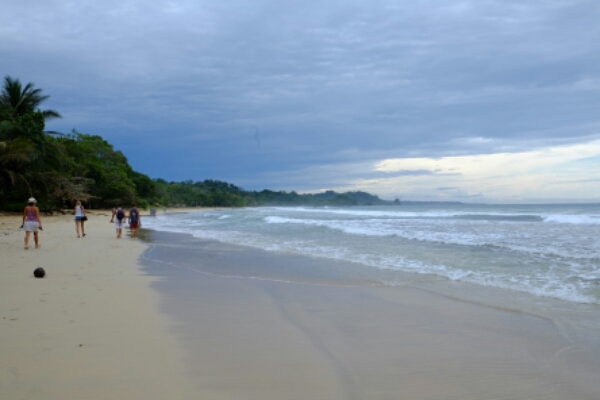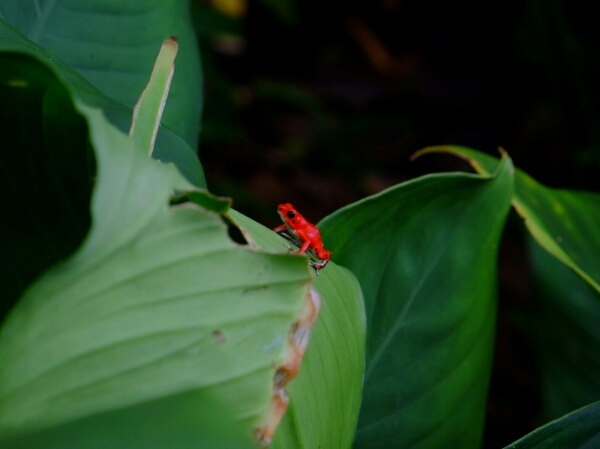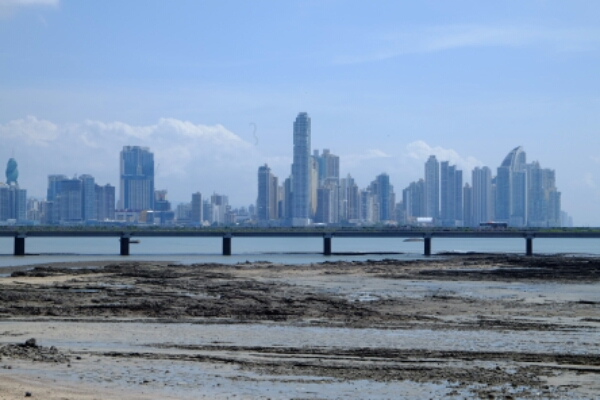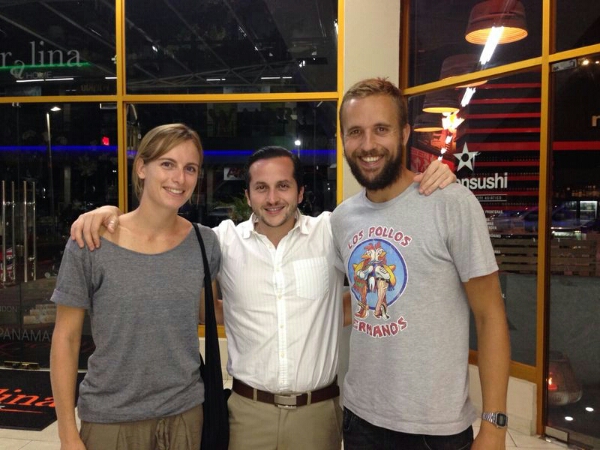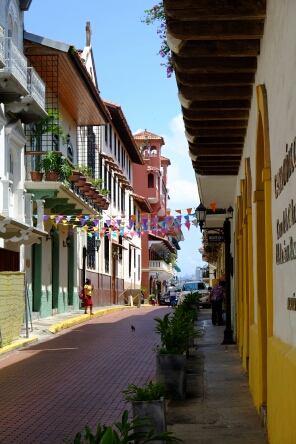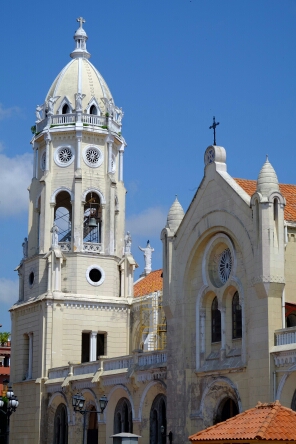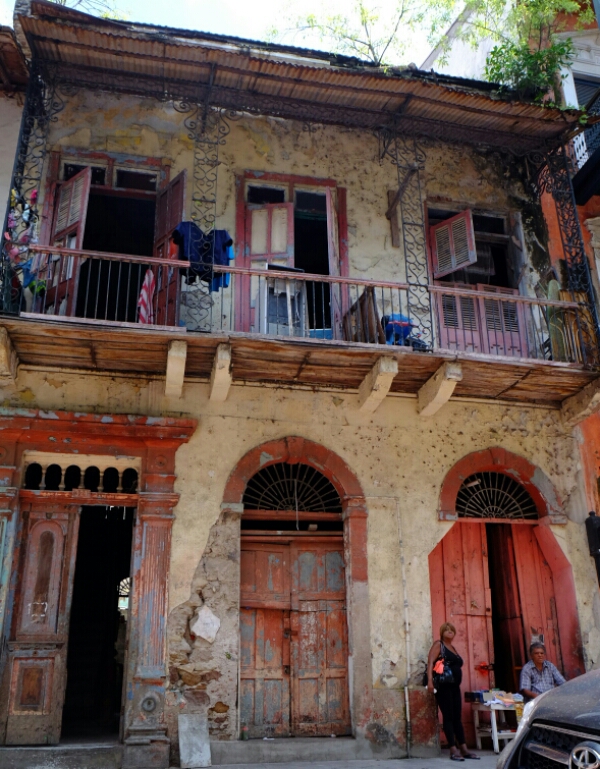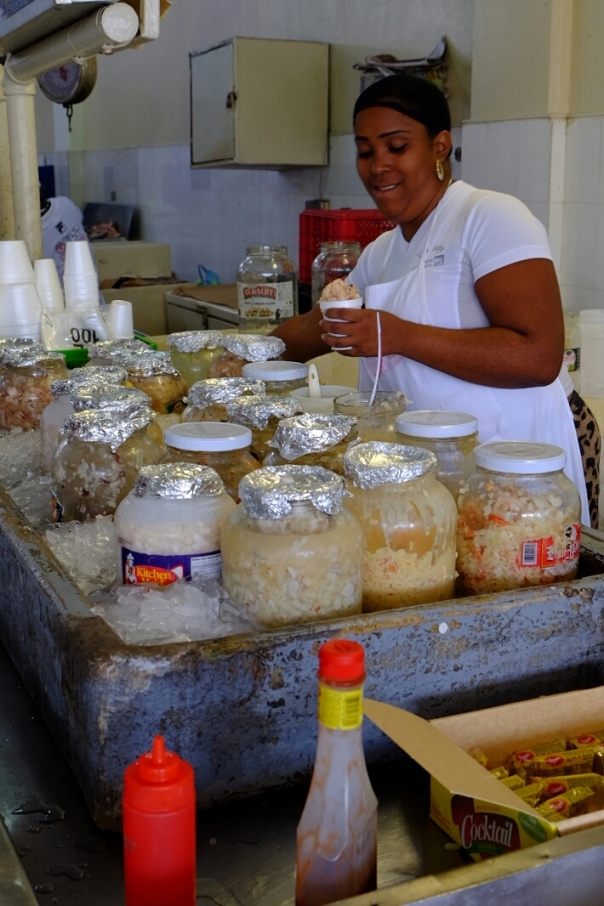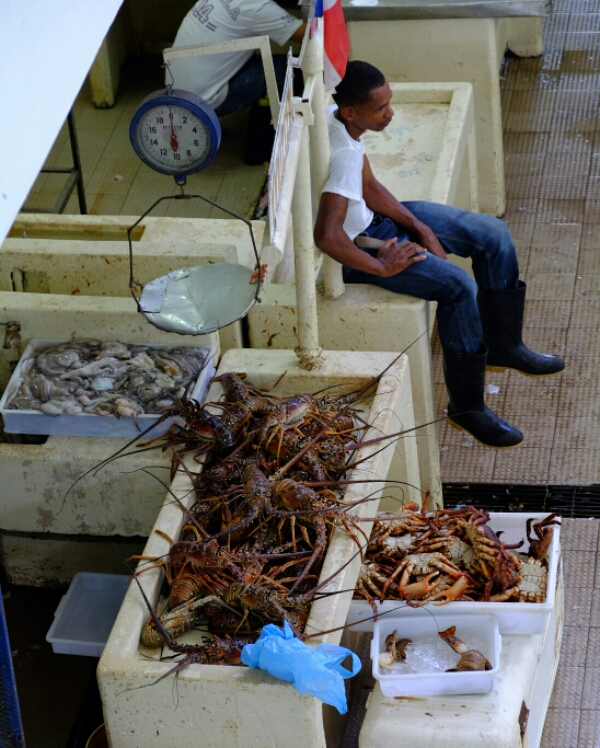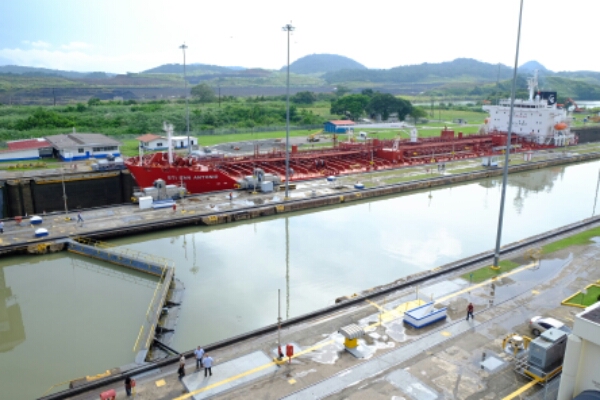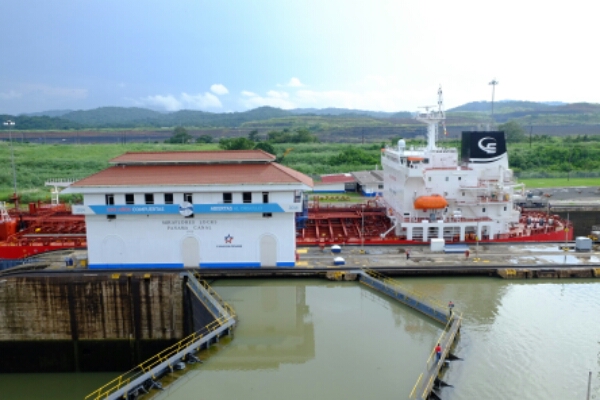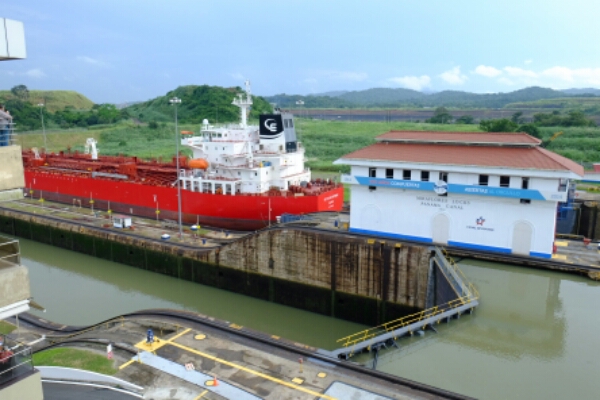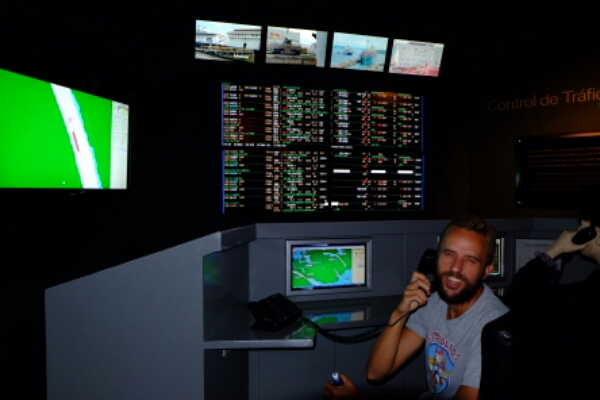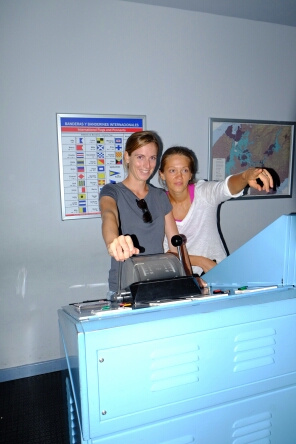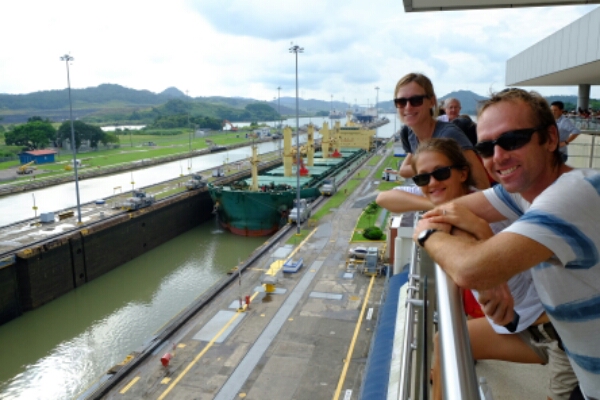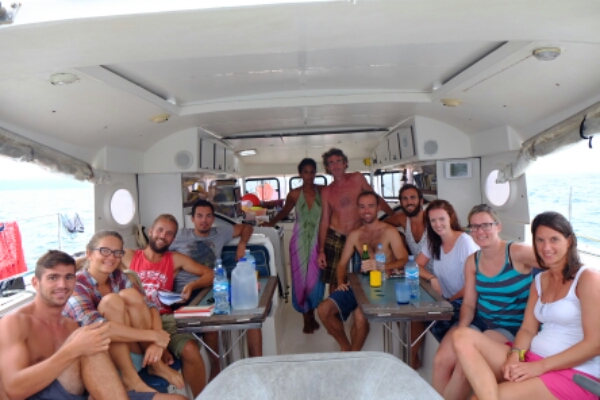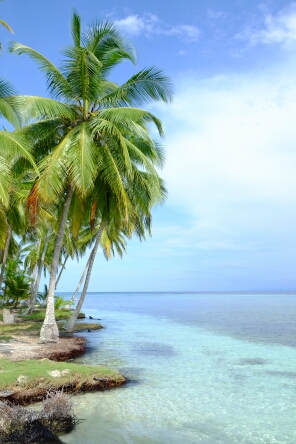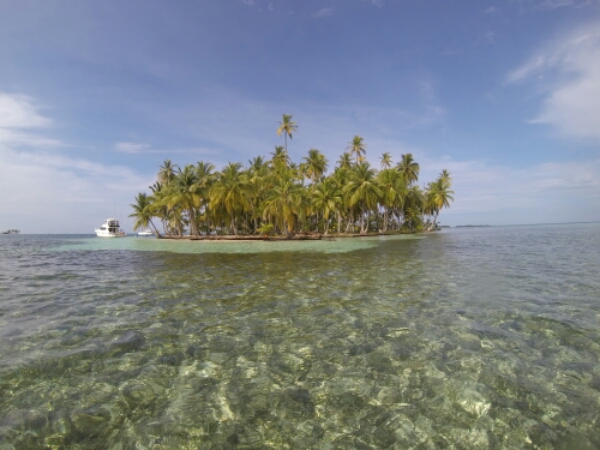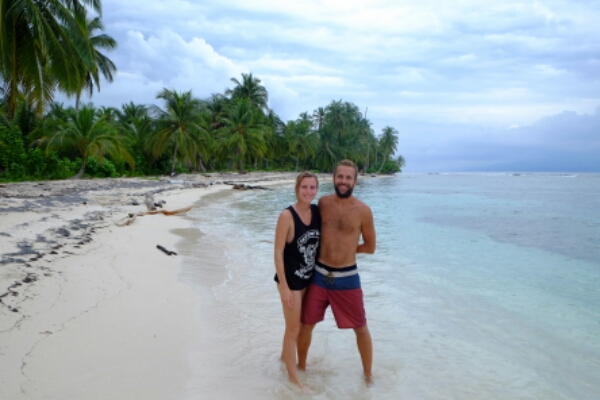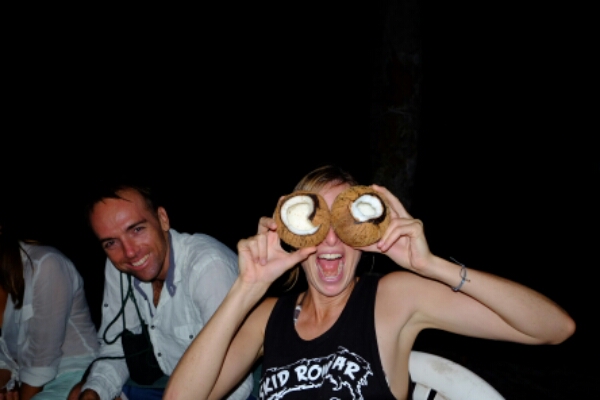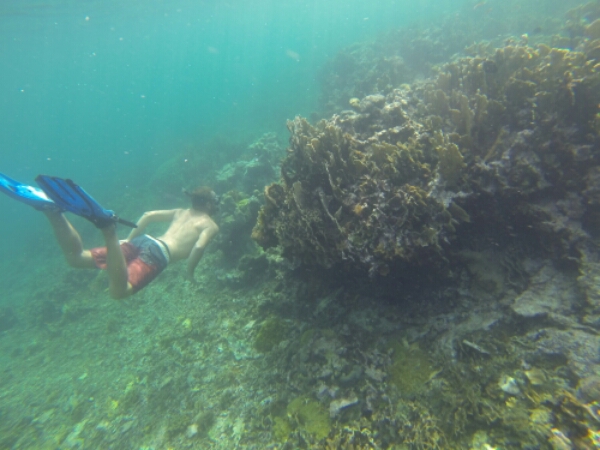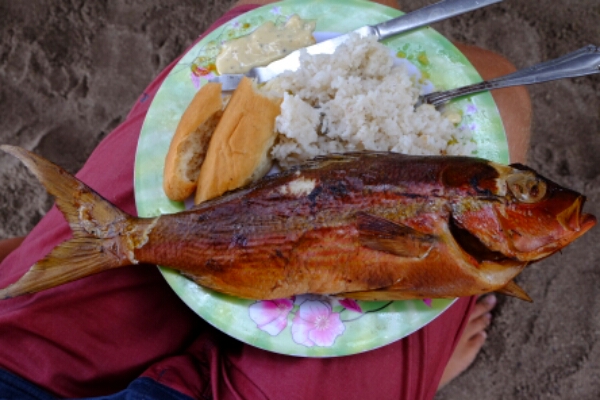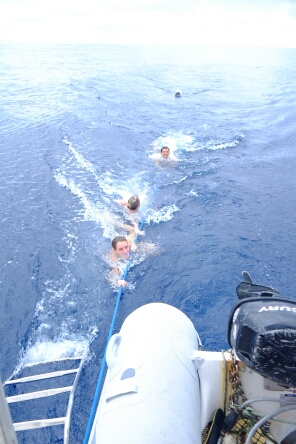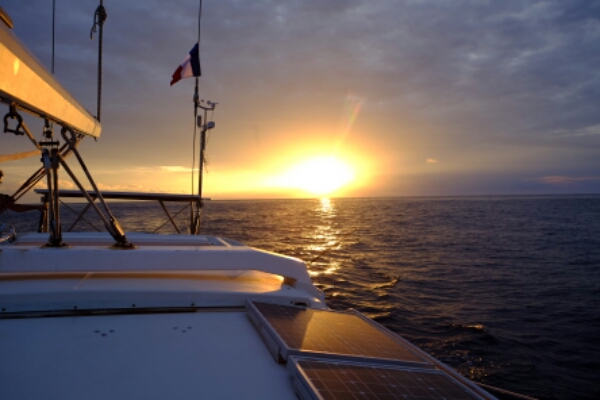Author Archives: Xavi
Sailing Antarctica
On February 8th we embarked on the adventure of our lives, a 20 day trip to the Peninsula of Antarctica. We never imagined that we’d be able to make it and even less on a sailboat! Don’t you need an icebreaker for that?? Well, not in summer!
Any concerns we may have had vanished after 5 minutes onboard the Icebird. Cath, our experienced captain, and Olly, the first mate, gave us the brief of this beautiful sailboat and we stocked the «supermarket» (a cold hatch dedicated to keep fruit & veggies cold) with enough food to survive for months. Special mention to “Lambie”, a whole Patagonian lamb that we took and was slowly salt-soaked with Antarctic spray – it was pretty amazing.
Our first navigation took us from Ushuaia (Argentina) to Puerto Williams (Chile), via the astonishing Beagle Channel. With all due respects to Ushuaia, we believe that the most Austral town claim should go to Puerto Williams, nestled in the Dientes de Navariño. If we hadn’t had to part the morning after to go to Antarctica, Sal and I would have happily stayed there for a week!
We were facing 4 full days to sail the feared Drake Passage (cruiseships usually take 1.5 days), so we farewelled the American continent in style, having a party at the Micalvi bar, an old steamer sunk by the land and full of flags and sailor memorabilia where we had a few more piscos than we should have had with the locals.
From then on, the real stuff started. We set-up rosters for cooking, cleaning toilets and cabins and also for the 3hr watch (followed by 6hr rest). Sailing continuously – mostly on autopilot – we had to keep an eye out for other boats, wind speeds and direction, the barometer, our position aaaand, after crossing the 60º latitude and officially entering Antarctic waters, keep an eye out for icebergs! You don’t want to end up making the news or inspiring a sequel for Titanic…
The 1st day was especially challenging for those not used to sailing. While the waves of the Drake Passage could have been worse, 3-4 metres were enough to keep us rocking and made us seasick despite the tablets we took. On the second day the winds stopped and we had to motor most of the way… grey sky, waves, rain, spray and a few birds were the only things we saw. By the 3rd day we had recovered our appetites and continued killing the time reading, chatting, making teas and, in my case, carving wood.
This last hobby I started in Puerto Williams. While the rest of the crew were showering and completing paperwork at customs, I spent close to 45min sweating and sawing a nice chunk of wood with my swiss army knife.
For almost a week after, I spent the time on watch and other spare time carving a ring to propose to Sal!
Travelling with a real ring for almost a year would have been just silly but I didn’t want to propose empty handed…
so I thought that Patagonian wood, a pearl I almost swallowed eating seafood in Chiloé and a volcanic rock from Antarctica would do the job. Then, I just had to find the right time to bend the knee…
In the meantime we had finally arrived to Antarctica! Olly land hoed 15min before us.. we were trying hard to see something in the horizon…but we only had to look up to over 2,000m where the peaks of the mountains raised over the clouds, way more mountainous than we had imagined.
It was a beautiful day with blue skies and the first sight of the contrast between the silky waters, snowy peaks and glaciers and clear sky is a memory that we will never forget. We entered the Antarctica Peninsula sailing near the Melchior Islands.
Antarctica has 97% of the world’s fresh water. Put all the rivers, lakes and snowy mountains in the world and that only adds up to 3%!!
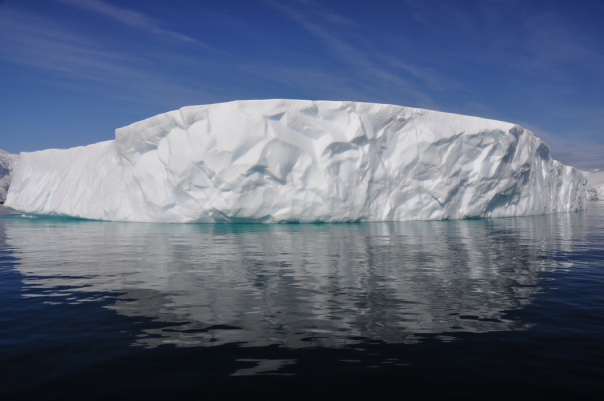
Our first mooring in Antarctica was in Paradise Harbour (I was so excited that I started singing along and versioned Guns ‘Roses’ Paradise City). The name makes justice to the place and Sal and I couldn’t help but jump in the kayaks to start exploring the area.
Among our duties, we also had to help with the lines when mooring or anchoring. Winds can change direction and force unexpectedly so we usually set 3 to 4 lines to ensure a quiet night… later on you’ll see how 4 lines are not even enough sometimes!
Once in the kayaks, the first thing we looked for were penguins and seals and let me tell you, there were plenty! After humans, they are the most populated species in the world. Seals are fat and cute, usually napping on a little iceberg and barely disturbed by our curious eyes.
Penguins were loud and stinky! Sooo stinky. Forget the majestuous and spotless images from National Geographic, the babies sleep on their own poo.
On the way back to the boat we made sure to bring some iceberg ice with us. The gin tonics tasted much better with it!!
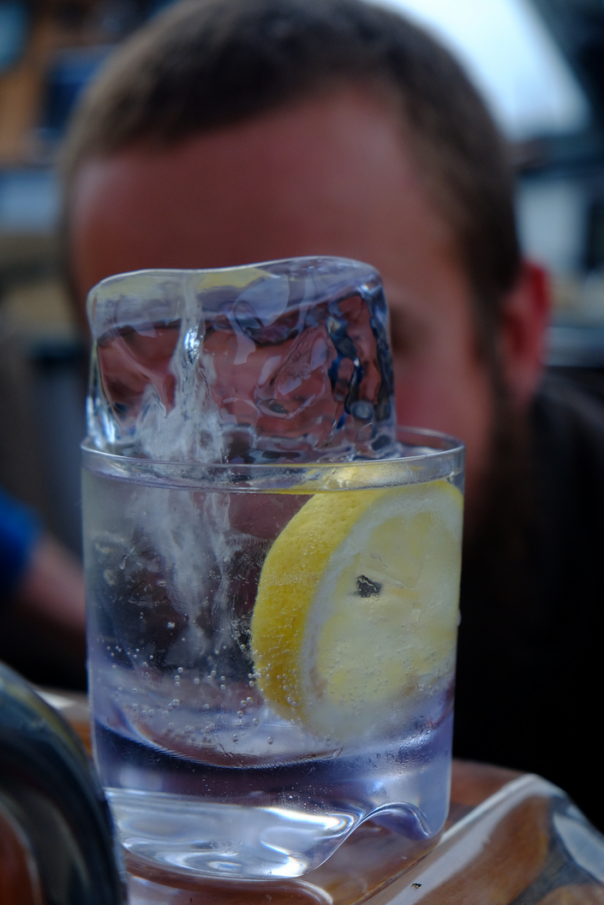
The day after we were on a mission to take Ronda (Steph’s Honda that she’s travelling the world with) to land. Using the boom as a crane, we moved the bike to the dingy and landed on a small beach.
It wasn’t a long ride, but Steph is probably the first woman to ride a bike on Antarctica, congrats! If you want to see some of her adventures, check out her blog.
The day after we were invited to visit the Gonzalez Videla Chilean Base. While the Antarctic Treaty prohibits military operations in Antarctica, Argentina and Chile have a few navy bases around, which are justified in case there’s an emergency.
The guys there spend 6 months in Antarctica by themselves so you can imagine how well they received us… especially the girls. The Chileans were really nice, they had us for lunch, showed us around the base and shared great pictures and their knowledge.
The day went by and we ended up having them for BBQ dinner on our boat… and more drinks. Steph even managed to get the name badges from two officials after daring to mast-dance in the cold cold night.
Interestingly, on these human bases penguins have found a safe spot from predators, so their population keeps increasing. While the bases look very nice, the penguin stench is powerful and even impregnated our clothes for a few days. Most of the penguins we saw were gentoos… however, every now and then we spotted the classy chinstraps. Sadly, Emperor penguin colonies are only found further into the south pole.
The days went by spotting more seals, humpback whales and even a family of orcas (you can recognise the dad by the huge dorsal fin).
«
The kayak trips were epic, it’s really cool to see the penguins porpoising towards you. After a few mechanical issues that the Chileans helped to fix, we started making our way towards Vernadsky, the Ukrainian base.
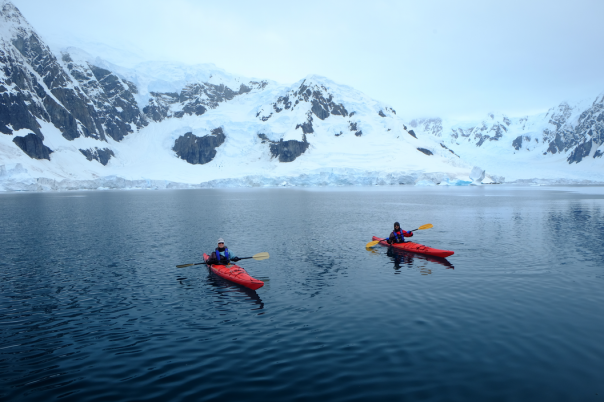
On the way there we passed the jawdropping Lemaire Channel, with big black snow covered mountains on either side and icebergs in the water.
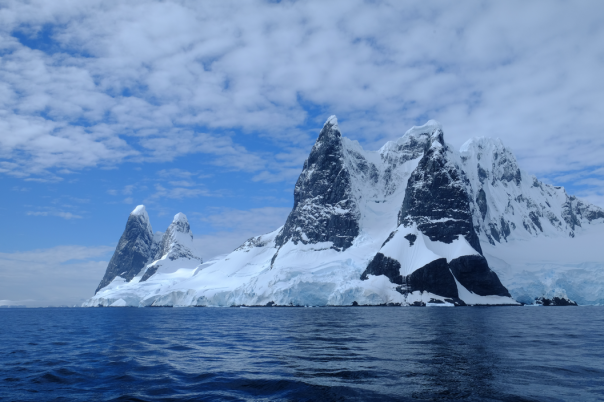
They called the 2 peaks on the left “Eunice’s titties’” after the secretary of a Falklands Islands / Islas Malvinas Dependencies Governor!
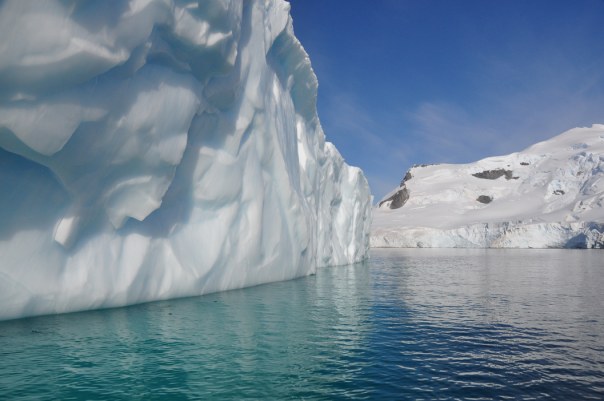
Sal and I were on kitchen duties, so we had a full Spanish themed day with sangria, paella, tortilla and tapas.
That afternoon we went for a hike to Peterson Island, where we found the sneaky Adelie Penguins.
Sal, Olly and I climbed to the top, we had a great view of the Pleneau Bay, which we also visited by zodiac the next day.
The day we reached the Vernadsky Base we kayaked in the morning and visited the Wordie House in the afternoon, an old British Base that has been well kept and maintains the decorations and materials from the old times (coffee tins, sunlight soap, typewriters, weather gauges, dog cards, gas mask, etc).
On the other hand, there are plenty of abandoned bases… which goes against the Antarctic Treaty (countries are responsible for removing them if they’re not being used), but you can imagine the costs involved. We also took a couple of tobogans to the top of the hill and had pretty close races. Heaps of fun.
Close to dinner time, we went to Vernadsky base. Cath told us about the sauna that the Ukranians had built there so, after asking for permission, Olly, Sal and I took a few beers and had a great time there. Our challenge was to beat the 5 rounds between sauna and Antarctic waters (1ºC)… so we took our time and raised the bar to 7 rounds.
I’ll never complain again about cold water in the Mediterranean or Australia. After a shower, we felt 20 years younger.
The Ukranian scientists were quite impressed so, in a gesture of caramaderie, gave us a round of home-made shots for every round of Sauna/icy water that we had done. Luckily, they had also prepared a traditional Ukranian dinner that helped to digest (special mention to the smoked-cured meat, so good!).
The Ukranian scientists taught us a few things that night, from some of their marine biologist projects, to some contorsionist tricks that involved twisting your body around a chair and trying to grab your drink just using your mouth without touching the floor.
As you can imagine, lots of us ended on the (carpeted) floor. Similarly to the Chilean base, there’s some serious work going on in Antarctica.
We followed our adventure sailing to Port Lockroy, a famous spot were the British have a wonderful base that serves both as a museum and a post office. They make an absolute fortune selling postcards and stamps!
Time was ticking and there hadn’t been a single suitable time to propose. Determination kicked in and I confided the secret plans to Cath, who allowed me to make a quick call to Sal’s parents. As you can imagine, the satellite communication from a sailboat to Australia wasn’t particularly clean, but it was enough to share the plans, a few laughs, and secure the approval from the headquarters ;)
We arrived to Cuverville Island, where our fellow travellers felt lazy and preferred to stay having tea on the boat.
Sal and I were eager to explore the area as usual, so Cath trusted Sal with the tender… and served me the chance I was looking for on a gold platter. We took the tender ashore and started hiking up the hill, passing a colony of gentoo penguins… one of them performing a courtship dance, very appropiate. At the top we had a great view of the channel and a bit of a sunset. Even the penguins had helped with their dance!
On the way down from the hill we were happily engaged but we realised that the tide had come up. The tender, still tied to the rocks, was just floating on the icy waters.
I started running as fast as I could, passing the horrified colony of penguins right through the middle, until I reached shore. Sal started enjoying her condition of fiancée and sent me off to catch the dingy, the knee high water going into my boots and cooling my legs off after the run. We finally made it back to the boat, one of us shaking, but happy as and with one more anecdote to share.
That night we slept on the boom of the boat in a really warm sleeping bag. We were hoping to see the stars but it started snowing on us so we had to zip up the sail cover.
The day after we motored all the way to Enterprise Island. It was beautifully calm, we had some blue skies and we saw lots of whales along the way. We even saw some that were using bubble circles the trap the krill while they scooped them up.
We ended up tying up to an old whaler shipwreck, kayaked around the area and saw lots of unfriendly fur seals, chinstraps and shags.
The day after we woke up early to prepare the boat for 100 nautical miles sail to Deception Island. 20 knot winds and big swell made it similar to the Drake crossing only with blue sky, sun, icebergs and antarctic coastline in sight. Finally, the wind and waves were getting too strong and the tender was getting damaged by rollers, so we had to give up and moor in the shelter of Trinity Island (uncharted territory).
A few night-watches after, we set-off at 5am and arrived to Deception Island, an old volcano, just after lunch. We anchored at Whalers Bay in the caldera, surounded by hills of volcanic ash, with seals frollicking on the beach and old, derelick abandoned buildings and silos. Sal and I went for a hike with Cath to see the chinstrap colony, but a snowstorm set in and when we got to the highest point it was all grey so we had to return.
That night was the hardest as we had to change the anchorage 3 times. The last time, we were awoken by the boat alarm at around 4am because we had run aground. Sal, Steph and I dressed up quickly and climbed the boom in the middle of a snow storm. Olly swung us out 180 degrees over the icy water to tilt the boat and set us free. The whole thing sounded like a joke… a Welsh, an Aussie and a Spaniard climb the boom in the middle of a snowstorm…
About 15min after we came down and had hot chocolates to warm up. The good news is that the island looked epic the next day after the snowstorm, so we climbed the highest peak for beautiful views of ash covered mountains with snowy veins.
Unfortunately, the next day we had to make our way to King George Island, where a flight was waiting for us in 48hrs. After so much work, Deception Island gifted us this beautiful sunrise as a farewell:
You can find the biggest base in Antarctica (Base Frei) on King George Island, with premises from different countries (Russia, Chile, China and South Korea).
Steph, Olly, Sal and I went for a wander and, on the way to shore, a huge leopard seal came to play with our bubbles. The seal popped its head on the side of the tender a couple of times and it looked as if it wanted to jump in, it was definitely interested in us and playful… but it was also the most terrifying experience of the trip. Leopard seals are huge!
Iván showed us the Chilean base where 8 men stay year round and 23 during summer (November to March). We played Chilean pool (they have everything to keep themselves entertained!); later, Sergio, a 26yo pilot showed us around the airforce base, including a catholic church, residential areas for the families and even a dome gym.
Our flight was cancelled due to the weather conditions, so we got an extra day in Antarctica (wohoo!). The morning after was beautiful and our flight was confirmed, but we still had time to visit the only orthodox church in Antarctica that the Russians built not long ago, where we were welcomed by the long-bearded priests who were singing and ringing the bells.
Shortly after we had to pack and clean up for the next group of travellers joining the boat and a pick-up took us to the landing strip, where a Brasilian Hercules had crashed on the runway a few weeks before.
Our flight to Punta Arenas was smooth and we waved goodbye to Antarctica as we saw the last icebergs and mountains poking through.
Arriving back to Chile felt like waking up from a dream and we had to get used to the backpacker life again quickly. A bus heading to Puerto Natales, our next destination, was passing by as we picked up our bags with just one spare seat, so we made the most of it and rushed to our next destination!
Coming next, the W Trek in Torres del Paine!
Chile II – Puerto Varas, Chiloé y Carretera Austral
After staying with family and friends in Argentina and Chile for almost a month, taking the zillionth overnight bus of our trip regained its original excitement.
Our destination was Puerto Varas, a charming town with German heritage that breathed through historical buildings and bakeries.


After exploring the town and meeting new friends at the hostel, we headed together to the Petrohué falls and Lago de Todos los Santos for a day hike.
The lake is crowned by the Osorno volcano which, with a permanent snowed peak, is used as a ski resort in winter. We have never been to Japan, but if we had seen someone wearing a kimono, I’d have sworn we were in front of Mount Fuji!
The hike was beautiful except for the harassment of the tábanos (horse flies) that only appear in this area for 1 month in the entire year. How lucky were we?? We even tried to get rid of them by swimming in the chilly waters of the lake…but then our heads were their only available target… so we resumed the walk shortly after.

Feeling exhausted but happy to have shared a great day with new friends, we all decided to chip in and buy the ingredients to make our own home-made Pisco Sour. It’s the national drink in Perú and Chile which is made with a grape liquor called Pisco, similar to the Italian grappa.

I asked a Chilean guy to supervise our cocktail making and the only thing he disapproved of was the alcoholic percentage of our pisco. We got the 40° instead of the 35° we were supposed to use… but no one complained about it really. If you want to make pisco: 1/3 pisco, 1/3 lemon juice, 1/3 sugar syrup, 1 egg-white for every litre of pisco, sugar and ice. Mix all the ingredients but the egg-white, which you will add at the end and shake the whole cocktail lightly (cocktail shaker) or blend it for a short time. You don’t want it to foam too much. Enjoy!
From Puerto Varas we were supposed to go to Puerto Montt and catch a 4-day ferry to Puerto Natales. However, the ferry was booked out until 2 weeks after, so we decided to visit Chiloé, Chile’s second biggest island. We loved Chiloé for many reasons, first you have to access it by ferry (there’s a project to link it to the mainland by a long bridge) and we saw plenty of sea lions on the way.
Ancud, in the north, was the first town we visited. While this town is quite famous for its Pingüineras, we decided to save the bucks and walk its calmed streets and fortresses instead. There was also a museum containing reproductions of the most important UNESCO recognised churches on the island, a unique example in Latin America of an outstanding form of ecclesiastical wooden architecture.

Seafood is quite popular in this area, so I was quite excited to try Curanto, a local dish made with a mix of mussels, clams, sausages, pork knuckle and potatoes that is smoked in a pot or buried with a local leaf. The smoky flavour is beautiful and Sal didn’t complain much because there was meat involved. The mussels were some of the biggest and nicest we had ever tried and one of them came with a little pearl that I almost swallowed, bingo!
From Ancud we headed south-west to visit Chiloé’s National Park. Once the tent was set, around midday, we realised that we had missed all the buses going to «El Muelle de las Almas» (The Souls Dock). We tried renting bikes but the prices were just a rip off… so we started asking locals if they wouldn’t mind taking us there for a fair price. People in Chiloé are really nice and it didn’t take us long to find a driver.
El Muelle de las Almas is this beautiful spot close to Cucao, known in the local traditions for being the place were souls start their journey. A few years back an architect built the dock that seems to lead to eternity. The legend says that souls carry two coins and are taken by the boatman to the resting place. Those souls without coins are stuck in the area forever, and you can still hear their cries mixed with the crashing of the waves.

Chiloé is a place of superstitions, legends and mythological creatures. Inhabitants talk about them naturally and some still believe in them. One of our favourites is «El Trauco», a kind of ugly forest dwarf who is able to seduce women. Back in the day, when there was an unexpected pregnancy, people used to blaim El Trauco, so funny.
The day after we went to Castro, on the east side of the island. Castro is famous for its «Palafitos», colourful houses that rest on wooden columns over the sea and that give the town a really cool look from the water.
From there we went to Quehui (pronounced very close to Kiwi), a tiny island 2 hours from Castro where they were celebrating a «Fiesta Costumbrista» (Folklore Party). If you ever go to Chiloé, make sure you’re there between the end of December and Mid February, when different towns organise these parties.
The few inhabitants in Quehui welcomed the 2 or 3 boats coming from Castro with open arms. We were some of the few tourists and were lucky to meet a Chilean family who told us about the traditions on the way to the island. All the action happened in the main square of the town, more like an open field than a square really, where they had set up 4 tents cooking local dishes (Curanto and Patagonian lamb BBQ) and a little stage.
The master of ceremonies led the party and introduced the local dancers, a little procession, a music band and, to everyone’s delight, the popular games: tug-a-war and wood-chopping.
I took part in the tug-of-war, joining the team of non-locals. We beat them on the first round (whether they gave us advantage on purpose or not will remain a mystery), but trashed us in the next 2 rounds. Good fun anyway.
When volunteers were asked to compete against the local lady in the wood-chopping comp I gently pushed Sal forward. When the locals heard that she came from Australia she automatically won some supporters, mostly male I should say, and a fierce competition started. Following the advice from the cheering audience Sal started rolling the log to cut it from different angles. A dodgy move was allowed when a guy swapped the local girl’s axe for a different one and, probably 5 hard minutes into fierce chopping, the local girl managed to split the log. Sal was very close though and the locals recognised the really good effort.
The day after we took another ferry that crossed us back to mainland, into Chaitén (not to be confused with El Chaltén in Argentina). Chaitén was buried in ashes in 2008 after the eruption of a volcano with the same name and it’s located on the Carretera Austral.
Having missed the ferry between Puerto Montt and Puerto Natales, the Carretera Austral was our only way south; however, even in summer, the frequency of buses is scarce. This road was not built until 1980 and it was one of the few positive things that Pinochet did during his dictatorship. As a result, people who live in the area are quite fond of Pinochet and have even named towns after his wife (Santa Lucía) or his government team (La Junta).
A couple of nights before we had also received the best news of the trip. After a few cancellations, we were offered a spot on a sailing boat to go to Antarctica! While we had never budgeted for it, the last minute deal and the savings from the previous months allowed us to make it (sacrificing little luxuries paid-off!). We were literally jumping on the bed celebrating the good news!
This meant that we only had a week to get to Ushuaia, more than 2,000km south, with unknown modes of transport and on one of the most isolated roads in the world…challenge accepted!
We arrived to Chaitén at around 6pm and decided to give hitch-hiking a first try despite it being late. Not long after, we were sharing a ride with a guy who organised fly-fishing trips in the area. We drove past beautiful parks and glaciers that we hope to visit more calmly in the future with our own car and he left us near a nice free-camping spot by a glacier river.
When we were convinced we were going to spend the night in the middle of nowhere, a bus passed by carrying just a couple of Chilean backpackers. It wasn’t a scheduled trip, but the driver had to pick a group of tourists from a town down south the day after. We got off in Puyuhuapi where we camped around midnight, having covered almost 200km.
The day after we were one of the first to hit the road and it paid-off. A really nice truck driver from Coyhaique gave us a lift all the way there (220km), but the road conditions meant driving all morning.
After lunch we walked to the other side of town to start hitch-hiking again, but this time we weren’t so lucky. A lovely lady took us 20km south, next to her farm, and from there in the absence of rides, we walked for around 2hrs, carrying our bags further into the middle of nowhere.
We were starting to look for a secluded spot to hide from the wind and spend the night, when salvation arrived in the form of a combivan driven by 2 Americans who had also been hitchhiking recently.
They were coming back from a 3 day hike called Cerro Castillo, highly recommended if you have the time and they left us in the town by the same name (Villa Cerro Castillo, 95km south from Coyhaique), where we spent the night in a cheap guesthouse with the company of 2 Chilean ladies and 3 Israelis.
The morning after we spent 2 hours and a half waiting for a ride.
In the end we had to pay for one but they took us right where we wanted to go: Puerto Tranquilo (123km south) by the Lago General Carrera, a stunning turquoise water lake that shares borders with Argentina. Over there we reunited with the 2 Americans and the 3 Israelis and we got the chance to visit the «Catedral de Mármol», a series of marble formations in the lake.
The Carretera Austral still continues for another 500kms or so until Villa O’Higgins, but we had already spent 3 nights just to cover a bit over 600kms and we only had 6 more days to get to Ushuaia.
That’s why when we were offered a lift to Chile Chico (at the Argentinian border) by a friendly Chilean couple, we didn’t think twice and offered them to pay for the petrol (cheaper than the bus). We left the next morning with them for another half a day driving journey through beautiful landscapes.
We had made it back to Argentina but we had just scraped the surface of Carretera Austral, which stays on our bucket list in big letters. We’ll be back one day with our own wheels, definitely the best way to explore its pristine nature.
Coming soon, our 4 day incursion into El Chaltén, the hiking capital of Argentina!
Love, Sal & Xavi
Argentina II – Fiestas con la familia!
This post is writen in Spanish as a thank you to our Argentinian relatives who adopted us during Christmas and New Year’s. Click here to translate into English https://translate.google.com/translate?sl=es&tl=en&js=y&prev=_t&hl=en&ie=UTF-8&u=http%3A%2F%2Fonewayticketon.wordpress.com&edit-text=
Un primo de mi abuelo, Salvador, emigró a Argentina cuando tenía 18 años. Es por eso que una gran parte de mi familia (más grande que la que nunca podría haber imaginado!) vive ahí, entre las ciudades de Buenos Aires, Rosario y la localidad de Firmat. Sal y yo no nos lo pensamos 2 veces y ajustamos la ruta de nuestro viaje para ir a conocerles y pasar las fiestas de Navidad y Fin de Año con ellos.
No hace falta decir que nos trataron como a reyes! Sólo bajar del autobús en Rosario ya nos esperaba la comisión de bienvenida: Nieves, Rubén DC, Marta, Sílvia y Sergio. Con ellos pasamos las primeras horas en Rosario, recorriendo la orilla del Río Paraná, el lugar preferido de los Rosarinos para hacer deporte, salir de fiesta y tomar su ceremonioso mate.
Rubén DC y Sergio nos contaron como el Río Paraná alcanza hasta 60kms de ancho en algunas zonas, y no fue hasta la construcción del imponente Puente Rosario-Victoria, que el tiempo de viaje entre esas localidades se redujo de 5 horas a solamente 1.
Una de las primeras cosas que notamos en el ambiente es la pasión por el futbol. Mientras que en Buenos Aires los seguidores de Boca Juniors y River Plate no se pueden ni ver, en Rosario el divorcio es entre Newell’s Old Boys y Rosario Central… incluso muchos de nuestros familiares se niegan a caminar por ciertas zonas de la ciudad (léase cercanías del campo del equipo rival) porque dicen que apesta, jaja.

Nice warning here: Wear black&red in our homeground. We recommend that you don’t wear gear from other clubs unless you’re using it to compete.
Quedaba todavía mucho por descubrir en la 3a ciudad de Argentina (en número de habitantes – nosotros la ponemos en 1a posición en muchas otras cosas), pero el resto de la familia nos esperaba para celebrar la Navidad en Firmat, a unos 100km al sud-oeste de Rosario.
En Firmat nos acogieron en casa de Sergio y Sílvia donde conocimos a sus hijos Flavia – gracias de nuevo por las clases de sevillanas! – y Gabriel – perdón de nuevo por robarte la cama! El tercer hermano, Andrés, se encuentra en Barcelona de intercambio, así que pronto iremos de tapas con él!
En su casa descubrimos 2 inventos Argentinos que deberían existir en todas las casas del mundo: la parrilla argentina y el quincho. No es ningún secreto que la carne argentina es de las mejores del mundo, lo que desconocíamos es cuanto mejor se puede cocinar una parrilla/BBQ cuando puedes controlar las brasas a tu gusto. El secreto es simple pero brillante, tener una sección de la parrilla independiente para el fuego y la otra para cocinar.
El quincho por otro lado es una sección de la casa independiente donde uno puede montar su fiesta aparte sin molestar a nadie. Cuantas famílias del resto del mundo todavía estarían unidas si hubiesen instalado un quincho a tiempo!?
A un par de cuadras encontramos la casa de Salvador y el corazón de esta família tan unida. Las puertas abiertas de su casa son un constante ir y venir de tí@s, prim@s, cuñ@dos, novi@s,… Mercedes y Javier (un aplauso para el asador profesional!) nos presentaron a sus hijos Belén (1000 gracias por todos los consejos para el viaje!), Fede (si no han probado https://www.facebook.com/profile.php?id=100008919282397 no saben lo que es bueno) y Manu (ojo Ginóbili, hay un nuevo Manu en las canchas!);
Jorge y Karina nos presentaron a más primos todavía: Ana Clara, Memi (futura selección de jockei!) y Renata. Nos sentimos tan acogidos que parecía que nos hubiésemos conocido de toda la vida y entre una casa y la otra, tantas historias por contar y gente estupenda por conocer, no nos dejaron de alimentar! De los 8 kilos que orgullosamente había perdido durante el viaje almenos recuperé 3 en una semana. Decir “no gracias” no es suficiente para evitar otra ración enfrente tuyo!
Al día siguiente llegó el resto de la comitiva desde BsAs y Rosario. Rubén P y Alícia, con sus hijos Luis – y su novia italiana Elisa (recién llegados del frío Kosovar) – y Cecília con su marido Fede y sus terremotos Sophie e Isabela. Y por parte de los Del Canto, Rubén y Marta (que ya habíamos conocido) y sus hijos Gonzalo, Mariano y Diego (gracias de nuevo por toda la ayuda en Rosario chicos!), con su esposa Paula e hija Camila.
35 nuevos familiares mezclados con una marathon de risas, asados, charlas con mate y rumbas de guitarra. Una vez recenados y después de los fernandos de rigor (fernet&cola) nos fuímos a la discoteca del pueblo como a las 2am…Sal y yo aguantamos estoicamente hasta la salida del sol… Cuando pensábamos que habíamos hecho un buen papel y ya marchábamos rendidos a casa llegaban Flavia con sus amigas :)
Firmat en si es pequeño pero tiene un montón de historia. Recorriendo sus calles uno puede encontrar los silos que se utilizaban para almacenar cereales, las antiguas vías del tren y edificios históricos.
Firmat continúa siendo un núcleo de producción agrícola, en concreto de la soja, de la cual se exporta una gran cantidad, mayormente a China. Prados y prados de verde soja, es el paisaje que predomina en esta pampa. De todas formas, la indústria también juega un papel importante ya que ahí encontramos una fábrica de Nestlé (donde Rubén P trabajó mucho tiempo) y de Vassalli (fabricante de vehículos agrícolas).
En Firmat no podíamos dejar escapar la ocasión de visitar la famosa hamaca (o columpio) que se mueve sola. Este fenómeno paranormal ha atraído científicos de varias partes del planeta, y se ha demostrado que no hay truco. No se mueve siempre, está claro que el fantasma no quiere columpiarse todo el santo día. Os dejamos nuestra foto y un link a YouTube para que no podáis dormir esta noche.
https://www.youtube.com/watch?v=-PHqCm0wNi4&list=PLvqO3IXkwrPy3Z0z5qLfC3o20O57xRJBM
Vale que hace viento, pero los otros dos columpios no se mueven igual!
Al cabo de un par de días nos unimos a la pata Panichelli de la familia para participar en la famosa Panifest.
Sal y yo empezamos a oír sobre esta fiesta solo llegar a Firmat, ya que tiene la fama de sorprender a los más fiesteros. La fama estuvo a la altura de las expectativas. 30 y pico bellísimos familiares más a la lista, más asado y mate por favor y una pileta (piscina) para refrescar el caluroso día.
Ríete tu de la Oktoberfest y del Primavera Sound.
Cuando ya no podíamos pedir más a unas Navidades, mis padres se animaron a venir desde España y pasar unos días con nosotros. El primer par de días con ellos los dedicamos a terminar de conocer Rosario con la familia Del Canto.
El paseo en barco es quizás la mejor manera de ver la ciudad y el río, pero también pudimos admirar la arquitectura, el Monumento a la Bandera (donde Belgrado izó la bandera argentina por primera vez), el Parque de La Libertad y finalmente, uno de mis objetivos en Rosario, conocer el club donde se formó Lionel Messi.
Malvinas es un club de formación de Newell’s Old Boys. No solo Messi ha salido de ahí, sino más de la actual media selección Argentina (Mascherano, Di María, etc). Como dije, la mitad de la família se quedó esperando en el coche para no contagiarse.
Y para los incondicionales de El Ché, ahí van un par de fotos de su casa natal y de un mural muy chulo:
De vuelta a Firmat pasamos la noche de Fin de Año juntos en casa de Sergio y Sílvia, en la que muchos nos acompañaron con la tradición de las doce uvas… algunos se atragantaron más que otros ;)
Palabras no bastan para expresar lo felices y afortunados que fuimos al conoceros a todos y agradeceros lo bien que nos tratastéis. Así que ahora lo que toca es seguir viajando para que nos podamos encontrar muchas veces más! Os esperamos en Barcelona y Australia, tener família en 3 continentes no tiene precio!
Aún con la resaca de la noche anterior nos metimos con mis padres en un autobús nocturno de 11 horas rumbo a Mendoza. Yo preocupado todavía por el jetlag de mis padres, nos encontramos con el mejor autobús que hemos tenido este viaje. Cena, desayuno, entretenimiento… Incluso un bingo organizado por la azafata sorteando vino! Llegamos a Mendoza más frescos de lo que esperábamos y con ganas de recorrer sus calles.
Mendoza sufrió un terremoto en 1861 que destruyó gran parte de la ciudad. Una vez reconstruída, fue diseñada para responder mejor a futuros sismos con avenidas muy amplias (para evitar que edificios se derrumben encima de otros) y plazas como punto de encuentro.
La mayoría del tiempo lo dedicamos a recorrer los famosos viñedos alrededor de Mendoza. Esta zona vinícola es famosa por producir el mejor Malbec del mundo y también por sus espectaculares vistas a los Andes.
Ahí visitamos los viñedos de Giol en Maipú, que en su día fueron los más grandes del mundo, y de Norton en Luján de Cuyo, donde por cierto se come muy bien!
Eso sí, si no tienes reserva para visitar los viñedos en Mendoza estás perdido.
Con el coche de alquiler lleno a petar nos lanzamos a la Ruta 7 y más de 500kms por delante para llegar a Valparaíso en Chile.
Cruzar la frontera por el paso de Los Libertadores es una experiencia única por varios motivos. La atracción principal es poder ver el cerro de Aconcagua, el pico más alto de Sudamérica (6,962m) y el más alto del mundo después de las cumbres del Himalaya.
Desde la ruta 7 hay un fácil acceso para autos y un sendero que, en escasamente una hora, te lleva a un mirador con vistas privilegiadas del cerro y otras lagunas.
A pocos metros de ahí se encuentra el Puente del Inca, una formación rocosa de orígen volcánico de la cual emanan aguas curativas. La leyenda cuenta que un rey inca llegó hasta ahí para curar la enfermedad de su hijo.
Antes del cruce fronterizo nos aventuramos a una excursión más hasta el Cerro del Cristo Redentor a unos 4,200m de altura que divide los países de Argentina y Chile.
Pese que el día era espectacular, el viento helado era terrible y echar un pis fue una tarea más peligrosa que de costumbre! No obstante mereció la pena por las vistas, tocar hielo y reírnos un buen rato.
Llegamos al paso fronterizo a eso de las 15.45. 3 horas y cuarto y muchas partidas de cartas más tarde entrábamos por fin en Chile con todavía muchos kms por recorrer.
En Valparaíso nos esperaba un merecido descanso y mucho más por conocer, pero esto será parte de nuestro próximo post.
Un abrazo, Sal y Xavi
El Salar de Uyuni y las Joyas de los Andes
This is not our usual post.
This is a bed-time story for our nieces Isla, Irene, Lulu and Júlia. We hope you enjoy it!
This story didn’t happen once upon a time, in fact it feels as if it was just yesterday when Sal and Xavi were in Uyuni, a small town in the middle of the desert in Bolívia, planning their next adventure.
Over the last couple of weeks they had heard plenty of rumours from fellow travellers about El Salar de Uyuni y las Joyas de los Andes (The Uyuni Salt Flats and the Andean Jewels).
Andean Jewels? asked Xavi to a Dutch guy with dreadlocks.
Ja man, they’re hidden in this crazy place, beautiful stuff… everyone goes there but no one has been able to find them. It is said to be the biggest treasure of humanity, whoever finds the Jewels will be the richest person on Earth!
Wow, let’s go there and find them!, urged Sal.
So off they went!
While searching for a guide, Sal and Xavi met 4 other girls who were also looking for the Jewels: Sandra, Christina and Julia from Germany and Mare from Austria. Feeling lucky with such a good company, Xavi found Domingo, an experienced Bolivian driver who was very happy to take the group on their quest.

The team starts their adventure! From left to right: Xavi, Sal, Mare, Christina, Julia, Sandra and Domingo
Their first stop was at the Train Graveyard, where half a dozen rusty locomotives lay motionless under the sun.
These trains used to carry precious metals from the Bolivian mines to the Chilean coast, said Domingo.
Precious metals?? This has to be it, let’s look inside them! They all yelled at once.
They spent hours and hours searching, even inside the engines and underneath heavy parts, and guess what?!?
No signs of the Jewels anywhere!! However, they had a great time jumping from train to train and getting to know their new friends a bit better.
A few kilometers further into the desert the group found a huge statue made of salt and, despite being quite hungry, they didn’t go and lick it (yuk, gross!).
However, they learnt from their guide that the statue was built to celebrate and welcome the famous Dakar race, where drivers and riders from all over the globe gather and race in the astonishing landscapes of Chile, Argentina and Bolívia once a year.
Next to the statue there was a nice hostel, all of it was made of salt too.
Wow, don’t they use glass windows, iron structures or wooden columns?
Not at all! confirmed Domingo, locals here have learnt to make the most of what they have… there’s salt everywhere, but they also grow quinoa, a super-food that goes very well in salads… and they farm llamas, an animal that comes from the camel and has adapted to the colder weathers of the Andes growing a very soft fur.
During this stop, the team continued to look for the Jewels, inside the hostel, the salt statues and the bags of quinoa…they even tried to look in the fur of the llamas, but they got spat on!
No success after half a day, but still amazed about the things they had discovered so far, our group of adventurers continued driving into the salt flats (which by the way are the largest in the world!), and where they were about to discover, crazy-crazy stuff really happens!
When they arrived to the middle of the Salt Flats, to their amazement, Sal and Xavi’s infancy heroes came up to life! A lego man went for a walk with Sal.
Apparently he was planning to build a massive lego city on the flats and wanted to ask Sal about her opinion on the colour of the pieces – while Xavi practiced some Tae-kwon-do with Songokuh (Júlia is pretty good at it so can you help me with my kicks?, asked Xavi to Songokuh).
Then, when everyone was having fun, this huge Godzilla monster appeared from behind a volcano and started chasing them!
Sal and Xavi tried to scare him away with some kames…
Luckily, they found their friends who were hiding inside a massive hat and…pheew!… helped them hide and escape from it!
They were so happy about surviving the attack from Godzilla but so exhausted that they had to take a siesta! (ZzzZzZzz) To recover energies they made a human-star shape on the floor as they slept.
The second-last stop of the day was at Inka Wasi (also known as Fish Island from its shape), a massive island in the middle of the salt flats with giant cactuses and coral formations.
40,000 years ago the sea covered these lands. This is why when the water evaporated it left the salt flats and coral formations that you can see today, said Domingo the guide.
Everyone started to look for the jewels between the cactuses and behind the rocks, as it would have been a great hiding spot.
Instead, they only found the flowers from the cactuses, which blossom right in that time of the year. How lucky were they to witness this happen!?
Also, some of the cactuses were up to 12m tall… this is more than 6 Scotts ontop of each other, amazing!!!
Exhausted from the long day and before going to bed, Sal and Xavi met a local kid, Jesús. Jesús was 5 years old and he lived in the small community where the team was going to spend the night, so they decided to ask him if he knew where the Jewels were.
I’ll tell you if you beat me at soccer! said Jesús.
Fair enough replied Xavi, this is going to be easier than I thought, hahaha!
Little did Xavi know about how good and passionate Bolivians are about soccer. Despite his small stature, Jesús trashed Xavi 10 goals to nil!! … so they couldn’t retrieve more information on their first day.
The day after Jesús gave them a clue: you could ask the llamas, they’ve lived in this place for longer than my ancestors!
Sal went and asked the llamas very politely about the whereabouts of the Jewels… but the llamas just stared at her as they were chewing their food.
She tried in English, Spanish, Català and even in her broken Japanese… the only response she got were llamas staring at the horizon, so they all decided to continue their trip in that direction.
The new day brought them to even more fascinating landscapes than the day before. First, into the Chiguana desert, which is surrounded by crazy rock formations and volcanoes (one of them semi-active, the Ollague 5,840 high).
Not much further they found the first of many lakes inhabited by 3 different types of flamingoes. These flamingoes feed on microorganisms found in the lakes and each lake has a distinctive colour. The different colours come from the different minerals that reach their waters.
Every corner they turned brought them to another beautiful landscape. Next, they found rock formations with the shape of different vegetables! You want to guess which one is which??
Among all the different lakes, the most impressive one was Laguna Colorada (Red Lagoon).
The group of friends had never seen anything like it or so many flamingoes together. The light from the sunset made the lake change its colours, everyone stared at it mesmerised for hours. If it hadn’t been for the cold, they could have stayed there and fallen asleep watching the stars.
The 3rd day the team started looking again for the Jewels around a different landscape, where geysers smoked and mud pots boiled.
The stink of sulfur was worse than Xavi’s farts and they could barely see anything with all the steam coming up. Also, if they didn’t pay attention, the steam geysers could send them flying more than 10m high!
After such an exciting and dangerous start of the day, the team asked a wise looking vizcacha where they could continue the search.
I don’t like getting wet sooo… if I had to hide any jewels, I would put them in the hot pools! The morning was quite cold, so jumping into the hot pools sounded actually like a very nice idea!
After swimming and diving in the search of the Jewels and only finding more feet from other travellers, Domingo warned them: we’re getting to the end of the trip… Christina, Sandra, Mare and Julia are going to cross the border to Chile and Sal and Xavi will continue to Argentina… If you don’t find the jewels soon, you won’t be successful in your quest!
So we headed to the last landmark in the route, la Laguna Verde and volcano Licancabur. Being aware that their time together was getting to an end, they actually didn’t spend much time looking for the Jewels. Instead, they made the most of the time chatting, joking, laughing and getting to know Domingo and his culture better.
And before they knew it they had arrived to the border with Chile, where the girls had to say goodbye.
I guess that we will have to leave the search of the Jewels for another time, said Sal.
Yeah, such a shame!! complained Xavi.
After so many adventures and beautiful places we almost forgot to look for them! said Sandra as she was thinking aloud.
Then Domingo called them all for a group shot and while everyone was saying cheeeeese and patataaaaa he announced:
You guys have just found the Jewels!
What? Are you kidding us?? We can’t see any diamonds or rubies! cried Mare
Don’t be silly!, laughed Domingo.
And he went on: remember the first day you met each other? All the team nodded. It’s been 3 full days of adventure, understanding different cultures, making new friends and witnessing some of the most beautiful landscapes that Earth has to offer.
All these things I just mentioned to you are the real Andean Jewels that people keep looking for, you’re so lucky to have experienced them!! Treasure these moments and continue travelling to make your treasure bigger and bigger.
So following the wise words of Domingo, they all hugged each other, waved goodbyes and realised that material things will never be as important as friendship, adventure and having fun!
Good night, sleep tight!
Sal & Xavi xoxo
Bolívia I – Lake Titicaca & La Paz
We were really excited to enter Bolívia, as our book-guide puts it, a country of superlatives: one of the coldest, warmest, windiest and steamiest, with some of the driest and saltiest places in the world.
It’s also the cheapest and poorest in South America, despite being one of the richest in natural resources. It has the highest indigenous population at around 60%…it has everything but coast, the only South-American country together with Paraguay with no access to the ocean.
However, they don’t lack water in the sacred Lake Titicaca, our first destination. This lake is the largest in volume of water in South America and the highest navigable in the world at 3,812m.
Accompanied by two Italian brothers, Francesco and Fede, we took the ferry to Challapampa, a small comunity at the north side of Isla del Sol, the biggest island in the lake. We hiked together, shared wine and trout meals and had a good laugh, it was really nice to meet you guys!
Isla del Sol is also very rich in Incan culture as it was a major pilgrimage destination. The name of the lake derives from the sacred rock Titikala which we found in the ruins on our hike the next day.
Quechua and Aymaras believe that the god Viracocha created human kind and the Sun where the rock is. A few metres down the track lies Chinkana (labyrinth), a huge stone complex thought be a training center for Inca priests. We loved getting lost in their maze-like corridors!
On our way back we witnessed something really special: an iridescent cloud! When we were starting to believe that weird things really happened on the island, a local confirmed that is a well known sign for upcoming rains.
And the rains were caught by the many hills on the island containing agricultural terraces, which adapt steep and rocky terrain to make the most of precipitations.
The next day we went to Yumani, a larger community in the south, home to the Inca Staircase, 206 steps that you have to endure with your heavy backpacks – or a water pipe if you decide to help an old local fellow carrying it by himself – to get to the town and your accommodation.
There’s also a sacred fountain with 3 different spouts. We were told that each one is believed to give its drinker the ability to speak a language, Quechua, Aymara or Spanish. I tried the 2 that had water that day and it kind of worked, I can speak Spanish!!
Back to the mainland we said goodbyes to Fede and Francesco and took a turn from the main touristic path to Sorata, a little town nestled in the Andes and crowned by el Nevado de Illampu, over 6,300m high. Can you believe that the clouds didn’t allow us to take a single decent picture!?
Still tired from the Salkantay trek, we enjoyed the calmed atmosphere of the town and opted for a half day hike to las Grutas de San Pedro, a beautiful cave very well maintained by the small community. The cave even has a lake that you can navigate by pedal-boat.
From peaceful Sorata we moved to bustling La Paz, the highest capital city in the world. The city is shaped as a bowl and its elevation goes from 3,200 to 4,100 at the altiplano (average altitude is 3,660m).

The arms of the clock in Plaza Murillo run anti-clockwise. The Government wants Bolivians to treasure their cultural differences and challenge themselves to think differently
To visit the city we followed a self-guided map, starting in Plaza San Pedro, where apart from your usual church, a block is occupied by the famous San Pedro prison. Sal passed up the chance to visit it 9 years ago when prisoners were allowed to make money by giving tourists a prison tour. It became such an attraction that some guests even stayed overnight!
Luckily Sal didn’t go in because, as you can imagine, one of this tours didn’t end up nicely and now it’s totally forbidden (a backpacker wrote a book called “Marching Powder” about his voluntary 4 month stay in the prison).
The prison is famous for hosting 2,500 inmates and their families (it was built to hold around 400!). Inmates have to pay for everything and are able to buy real estate. The poorest cells hold many inmates and have no toilets. The best cells are duplex apartments with wifi, cable TV and even jacuzzi that go for around AU$900/EUR640 per month. Inmates run businesses in there (hairdressers, tailors, grocery stores,…) and even Coke has negotiated an exclusivity deal with the prisoners to be the only soft drink sold in the prison. Inmates even have to pay to get into prison!! (AU$3.6/EUR2.5).
Los “Lustrabotas” are another sign of identity of the city. Each one of the estimated 3,000 in La Paz treasures and defends (often fights for) their space on the footpath. They cover their faces to protect their identity and, unfortunately, lots of kids miss school to try to make money this way.
If you like markets, this is your city. Apart from the typical artisanal stuff, the Witches Market is probably the oddest and most fascinating one.
Despite its central location and colourful set-up it’s not meant for tourists, locals buy there all the time.
There you can find all sorts of potions, counter-curses, dried llama fetuses (you’re supposed to offer it to Pachamama by burying one in the foundations of your place for good luck and protection – of course) or dried toucan beaks, intended to cure ills and protect supplicants from bad spirits.
Crazy traffic and maze-like streets made public transport a nightmare until they built the super-modern Teleférico (cable-car) in May 2014, connecting far sections of the city in a few minutes ride. The Teleférico took us to El Alto, a neighbourhood at the top of the bowl, which hosts La Feria del 16 de Julio on Sundays.
This is the biggest market we have ever seen, as most of the streets of this suburb are packed with different stalls. Each street specialises in different goods, from hardware, toys, food, furniture, shoes, mountain gear, animals, there’s even a roundabout dedicated to vehicles!
Sal and I couldn’t miss the food market, Mercado Lanza. The busiest place with locals was our choice and we had to wait and fight for a spot but we were rewarded with a massive “Plato Paceño” which combines cob of corn, fried cheese, bean pods, chicharrón, potatoes and hot sauce. No cutlery needed.
You can rarely find a supermarket in La Paz and all the big fast-food chains that tried to enter the Bolivian market failed. Almost everyone buys fresh produce and have US$3 meals at the local eateries from the markets.
Cholitas are the local indigenous women, famous for their attire. The bowler hat was introduced by British Rail workers when the mining industry was booming. A large shipment of these hats arrived from Italy in the 1920’s; Italians figured since people are smaller in Bolivia, their heads would be too…but they wouldn’t fit their normal-sized heads and they had to convince women that small hats were the latest fashion for women in Europe.
100 years later the trend continues… A designer hat can cost up to US$1,000 and, apart from being used as a social status symbol, it also functions as a relationship status: wearing the hat on the side means she’s single or widowed; if on the top, she’s married or taken.
Bolívia also holds another World Guinness Record for having the most political leaders in the shortest amount of time, between 1825 to 1982 there were 188 coups d’etat.
However, Bolívia has found stability with Evo Morales, the first indigenous president. While he has helped to diminish poverty, illiteracy and racism drastically (the indigenous flag “whipala” is now the second flag of Bolivia), he also has a reputation for enjoying his position of power…he put himself in the starting 11 of the national soccer team for a game!
One of the activities in my bucket list for this trip was riding the Carretera Yungas, best known as the “Death Road“. This gravel/dirt track covers 69km stretch between La Cumbre (4,650m) and Coroico (1,200m).

Starting our descent from La Cumbre (around 5°C). This is a paved section of the excursion, not the Death Road yet.
This road is legendary for its extreme danger. Based on the ratio of death per mile, on an average, 26 vehicles plummet over the edge each year, claiming more than 100 lives.
The estimation is that 200 to 300 travellers were killed yearly along the road. With these numbers, in 1995, the Inter American Development Bank christened this highway “The Most Dangerous Road in the World”.
The road is way safer now with the opening of a paved road 10 years ago reducing the vehicle traffic, but we still enjoyed the thrill. So much fun and another dream coming true!
We have more adventures in Bolívia to tell you but we’ll wait to the next post, this one might hold the record for the longest so far!
Love, Sal & Xavi
Ecuador I – The Mainland
We loved Colombia but man, how nice was it to get back to a country with shorter bus rides! So after a painless border crossing and just about a couple of hours south, Mike, Ana, Sal & I reached our first destination in Ecuador: Otavalo.
Otavalo is a charming, ideal-size town, big enough to resupply toiletries and small enough to walk across it in less than half an hour. Otavalo is also home to the indigenous group of the kichwas, famous for their commercial and textile abilities.

The main highlight in town is its artisanal market in Plaza de los Ponchos, the biggest of its kind in South America. Vendors from the entire region gather in a huge plaza to sell all sorts of weavings, wooden carvings, jewellery,… it’s a paradise for hippies! We actually loved the hammocks (bargain for $15), but we had to leave them behind…as we’ve had to do with many souvenirs from other countries…to keep the backpack weight under control.

However, I couldn’t say no to an Andean beanie ($3) that has been keeping me warm at altitude since! What I needed the most though, a pair of casual shoes to change into after wearing stinky hiking boots all day, proved impossible to find. A normal size like 12/EUR 46 has no place in Central and most of South America (maybe size 10/43 if lucky)… and get ready to be laughed at if you ask for it. Do you need the shoes for a clown costume, sir?

To finish off with the markets, we had most of our meals in the food markets. Ecuadorian’s national dish, laquingacho, is a combination of fried mash potato balls, mote (corn), avocado, chorizo or beef and a fried egg on top. Simple yet delicious!
I also made some friends improvising a basketball game with a paperball and my t-shirt neck as a hoop… hours of fun!

The day after we put on our cold-night-aired hiking boots and headed to the Cuicocha crater lake for a beautiful 4 hour hike around it. The beanie came handy as we started to explore the Cordillera de los Andes!

Colectivos take you to the start of the walk and we were told that there would be many ready to pick us up afterwards. After the 4 hour walk and starving, there wasn’t a single soul at the parking lot…until a Canadian journalist, his Ecuadorian guide and driver came out of nowhere and offered us a ride to the bus stop. We’ll be thankful for eternity, what a nice group of guys and what an awesome job he had!
Quito, the capital, was our next stop. The free walking tour is a must, as well as paying a couple of bucks to get to the top of the Basílica. It has amazing views of the busy city and thrilling ladders over gargoyles in the shape of all the fauna from Galápagos. Interestingly enough, there are several unfinished decorations on the facade. The reason for them is pure superstition, as there was a volcano eruption when they were about to finish this masterpiece, so they never dared to complete it.
Another church, San Francisco, makes it to the list of highlights in town… it’s a real shame that Spaniards had to build them directly above the indigenous cult buildings…
For an evening treat, we headed to La Ronda, the former red light district is now converted into a beautiful pedestrian street with little bars offering local specialties and live music.

A few kilometers north from Quito you can reach “La Mitad del Mundo” (The Middle of the World), a cool monument surrounded by tourist shops that is suppossed to be in latitude 0° 0′ 0”. Apparently they screwed up with the coordinates and the real middle of the world is a few kilometers in another direction…but hey, why spoil a story with the facts!
The 4 of us couldn’t believe our eyes when, waiting for our turn to take the pictures, a man started carving jamón ibérico right in front of us. The guy was launching a range of spanish cured meats in Ecuador…so Ana and I quickly became interested in the story…and the ham. Big
mistake from my side: don’t offer to take pictures when there’s jamón in between. I missed most of the slices to my fellow travellers.

Another relatively short bus (4hrs this time) took us to Latacunga, our starting point for the Quilotoa loop. This loop takes 3 days of hiking to complete and the beauty of it is that you spend every night in a different remote andean town.
The scenery was great too, from local markets, to more crater lakes, river crossings, valleys, lookouts,…you basically ascend and descend a different valley every day.

We were also adopted by a dog on our last day, we kept each other’s company, runs and laughs for 3 hours or so, until we reached the next town, territory of some nasty dogs that scared our friend away.

Sigchos, the town at the end of the walk had some local delicacies being barbequed in the main plaza. We couldn’t say no for $0.20!
Back to Latacunga and after a recovery night, we took another bus to Baños, a touristy town for gringos and locals alike, surrounded by active volcanoes and famous for its sugar cane candy, waterfalls and hot springs = baños, rich in all sorts of minerals.

The sugar cane candy is hooked around this wooden stick several times to stretch it and cool it down

The hotsprings are located right next to a waterfall, so you can jump between 40C° to 15C°…and quickly back to 40 :)
After this deserved treatment, we rented mountain bikes for the next day, so we could cover the 50 odd kilometers of La Ruta de las Cascadas (The Waterfall Route). The mountain bikes aren’t necessary, any plain city bike would do the job as most of the way is downhill on a paved bike lane…however, I’m sure they rent more bikes this way. The disappointment in terms of the biking challenge was offset by the fury of some of the waterfalls and the great spots to swim. After that, no one in their sane mind would pedal 50kms uphill, so we paid a couple of bucks for a ride back home.
While soccer is supposed to be the national sport, the only game we saw people play in almost every town was volleyball! Around 6pm, nets are set and teams of 3 challenge each other. Competitiveness is high, although it’s more about laughing at the other team’s mistakes.
 We were lucky to be in Ecuador in October, as they celebrate lots of local fiestas. Apart from fireworks and a minimum of 2 processions per day, we witnessed some local games held at the market while we were having lunch. The 2 games that got the crowd roaring were the watermelon and cucumber races. Both disciplines were quite sexist, the first involved the local women pushing a watermelon for a lap around the market with a broom; and the latter was a relay of running holding a cucumber between the thighs.
We were lucky to be in Ecuador in October, as they celebrate lots of local fiestas. Apart from fireworks and a minimum of 2 processions per day, we witnessed some local games held at the market while we were having lunch. The 2 games that got the crowd roaring were the watermelon and cucumber races. Both disciplines were quite sexist, the first involved the local women pushing a watermelon for a lap around the market with a broom; and the latter was a relay of running holding a cucumber between the thighs.
In the meantime, pork crackling and chicha were being served up to the locals.

The hotsprings and the waterfalls are the main inexpensive attractions but, if you’re into extreme sports, Baños is a great spot for rafting, paragliding, bungee, etc. We didn’t sign up for any of them because we were keeping the budget under control after taking the leap and deciding to visit the Galápagos, which we will cover on the next post, don’t miss it!
Love, Sal & Xavi
Colombia III – Eje Cafetero and the way south
After leaving Australia, Sal pretty much went cold turkey on coffee and I think I could count the drinking occasions of the past 6 months on my hands. So we were really excited to visit the Eje Cafetero (coffee growing region) of Colombia. Getting there meant another 8 hours on buses going over switchback mountain passes full of traffic jams because trucks get stuck just trying to go around the turns. We’re also starting to see a trend in bus driver movie tastes, we’ve seen far more violent action movies with aging Sylvester Stalone and Arnold Schwarznegger than I care to remember, however, at last we arrived in Salento.
After many emails over the previous weeks, we also finally caught up with Mike & Ana who had been trailing us for a couple of months since we parted ways in Guatemala. So back in a party of four, we set off to learn about how they grow Colombia’s pride export product with a tour of a local coffee finca run by the owner himself, Don Elías.
Then as the rain set in for the afternoon, we were introduced to one of Colombia’s national sports, Tejo and another bar game, Sapo. Tejo, described to us simply as a mix of beer and gunpowder, is an awesome game where a metal ring is placed on a clay slope with a piece of gun powder placed on top. The players then toss a heavy puck with the aim to land it inside the ring to win, or on the ring to explode the gun powder. A recipe for hours of fun!
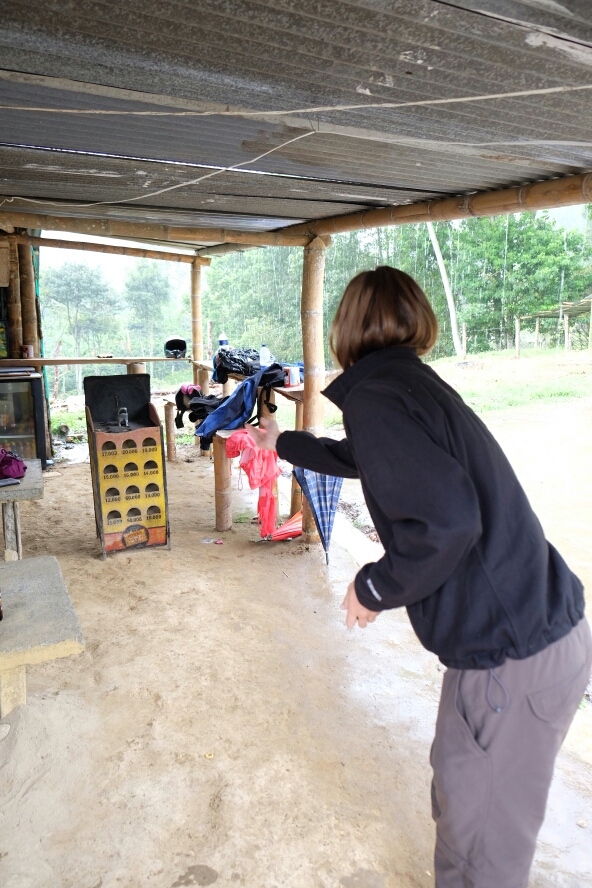
Playing Sapo...you have to toss coin-like tokens aiming for the toads mouth. Points are awarded depending on the holes you hit.
While Sal was out sick for a day, Mike, Ana and I went to the main plaza where the famous “Willies” were waiting to take us to the famous Valle del Cócora. The Willy is an iconic 4WD quite popular in rural and touristy areas, where they load their backs with coffee sacks until they perform an actual wheelie. Whether the name comes from this stunt remains a mystery.
Just when we were about to jump on one of them, another familiar face showed up. It was Adrián, who we had met around 5 months ago in the same place in Guatemala that we met Mike and Ana, such an amazing coincidence!
A few kilometers down from Salento, you arrive to the Parque Nacional Natural de Los Nevados, where Valle del Cócora is located. The park is huge and home to some of the highest peaks in Colombia, but the main reason for the visit were the wax palms.
These palm trees are huuuge, the tallest palm trees in the world, reaching up to 75 meters. The wax obtained from them is used for soap and candles, but those in the valley are strictly protected as they are part of the natural patrimony.
The 5hr hike didn’t look promising when the dark clouds released and it started to pour down. We all envied Sal, who had stayed in the hostel watching movies and drinking hot agua de panela! However, once we reached the highest point of the hike and the mist embraced the wax palms, our faces lit up. Also, it’s quite uncommon to have blue skies in the valley, so all was part of the experience. Gumboots saved the day and we really enjoyed the hot showers when we arrived back home!
Continuing south towards the Ecuadorian border we made two overnight stops to break the long bus journeys. In the first, Popayán, we only had time to visit the center of this nice white colonial town, with an interesting old bridge and great local snacks to try.
The second stop, Ipiales, is the home of the Santuario Las Lajas, a crazy gothic basilica church a few kilometers from town, which looks like it could be in the middle of Europe. Apparently the inspiration for the church came in 1754, from a deaf mute girl who was sheltering from a storm between the rocks in the canyon. Suddenly, she cried to her mum that “La Mestiza” was calling her while pointing at a lightning illuminated aparition of the virgin mary on the rock face. Anyway, now the walls surrounding the church are covered with plaques giving thanks for local miracles.
We spent a full month in Colombia and we still left out plenty of highlights for our next visit! It’s been one of our favourite countries so far and we can only recommend to visit its great landscapes and charming people. Don’t let the media scare you off!
Next up we cross into Ecuador and move into the southern hemisphere!
The Panamá Connection
We entered Panamá with a question: what to visit in only 2 weeks so we could get to Colombia by mid September. We had to be really selective with the destinations, so this was our plan: Bocas del Toro, visit our mexican friend Jorge in Panamá City and embark on a sailing trip that would take us to the San Blas Islands and an open ocean crossing to Cartagena, Colombia.
Bocas del Toro is an archipielago of islands at the north-east part of the country. Sal had visited them with Banksy 9 years ago and had memories of this fishermen village with dirt roads, few backpackers and great atmosphere. However, appearing on lonely planet as the top destination in Central America doesn’t help to keep the authenticity of a place, so we were surprised by concrete roads, fast food chains, overpriced hostels and lots of tourist agents selling tours. While the prospect wasn’t that good, we were lucky to meet again with Pete & Lina, an Aussie/Lithuanian couple that we had met in Guatemala a few months back.
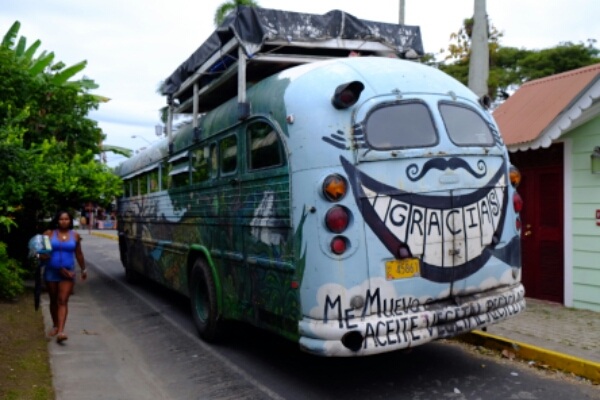
The guys travelling on this bus gave a free concert for everyone that day. We were missing live music!
We spent 3 great days with them exploring the different highlighted beaches like Bocas del Drago (aka Playa de las Estrellas) on the main island (Isla Colón) and Red Frog Beach on Isla Bastimientos, where we had to negotiate hard for a fair panga ride in order to get there.
While we were a bit disappointed by the beach standards…living in Australia doesn’t help…we had lots of fun with Sal’s favourite sports: collecting and opening drinking coconuts and spotting wildlife. The latter came in the form of the name of the last beach, a tiny, bright red frog that brought us back to the Costa Rican jungle for a few minutes. The red frog is almost extinct, so it was great to still manage to find one of them.
An overnight bus took us all the way to Panamá City, our first city after almost 6 months travelling! We were welcomed there by a huge thunderstorm, whose thunderstrikes set off nearby car alarms, and Jorge! We met Jorge 9 years ago in Vancouver and he was a great host during our 3 days in the city. His apartment had awesome views to the bay where we could see the huge cargo ships lining to enter the Panamá Canal but what we really enjoyed was his knowledge of the city, exploring it with him and remembering the good times at UBC (University of British Columbia), where Sal & I met.
We also had our dose of city luxuries, like mall shopping (don’t try to find shoes over size 10 in Central or South America!), cinema… somehow Sal & Jorge convinced me to go and see Teenage Mutant Ninja Turtles… and enjoyed some beautiful sushi for dinner!
Apart from that, Panamá’s old town is very pretty and you can breath its history through many statues and monuments to Bolívar, the military and political leader that played a key role in the freedom of Latin American countries from the Spanish empire; but also to the Panamá Canal and its promoters, which has changed the quality of life of this country over its 100 years of history.
The visit to one of the canal locks was a must and well deserves half a day to check the museum, 3D movie and watching the massive cargo ships go through the 3 stages that form the Miraflores Lock.
Out of curiosity, an average of 40 ships cross the canal every day. The cheapest vessels pay around $800 to cross, while a cargoship with 5,000 containers can pay up to $400,000! We heard that the average is around $100K, so you can figure out how much money they make every day!
Finally, we headed to Puerto Lindo, an isolated fishermen town where we met the Loic, the French captain that took us on his sailing boat from Panamá to Colombia, and the rest of our fellow sailors.
Alternatives to boating were similarly expensive flights or crossing the Darien National Park on foot, which is apparently ruled by the Colombian Guerrilla (FARC) and druglords.
Moreover, the sailing boat stopped for 3 days at the San Blas Islands, this time a really unspoilt, paradisiacal group of islands inhabited by the Kuna Indians. The Kunas are an old indigineous tribe and it’s said they are the only one that has managed to remain the rulers of their own land.
As visitors, we only had to respect some rules… like paying $1 for coconuts (their main source of income), not marrying a Kuna and not scuba diving (at $5/lobster, we imagine its their 2nd source of income).
Every morning the locals would arrive alongside our boat in their dugout canoes, with big grins showing off their lobsters, artesanal weavings or carvings. Photos of the Kuna are a contentious issue there since they saw themselves on postcards being sold in the city, so we resisted, but if you check them out on this link. The costumes and jewellery are pretty cool.
The sailing trip was a great experience, although we recommend doing it in the other direction to make the most of the currents and winds to get the sails out.
Most importantly, we made it to Colombia in time to meet with our friends, but this will be part of our next posts.
Big hugs!

